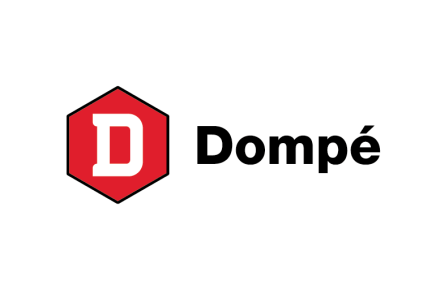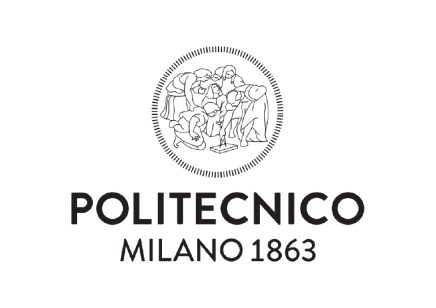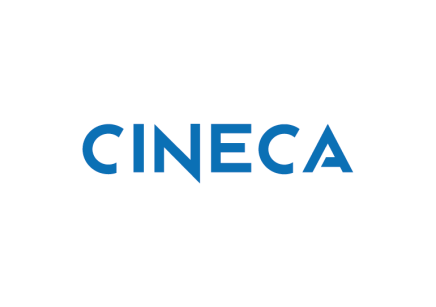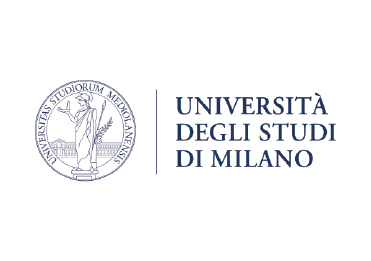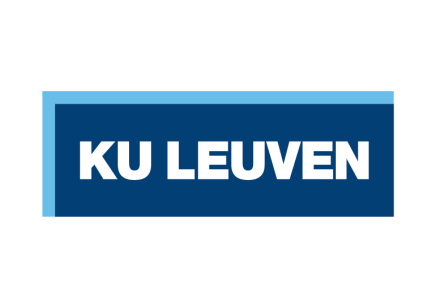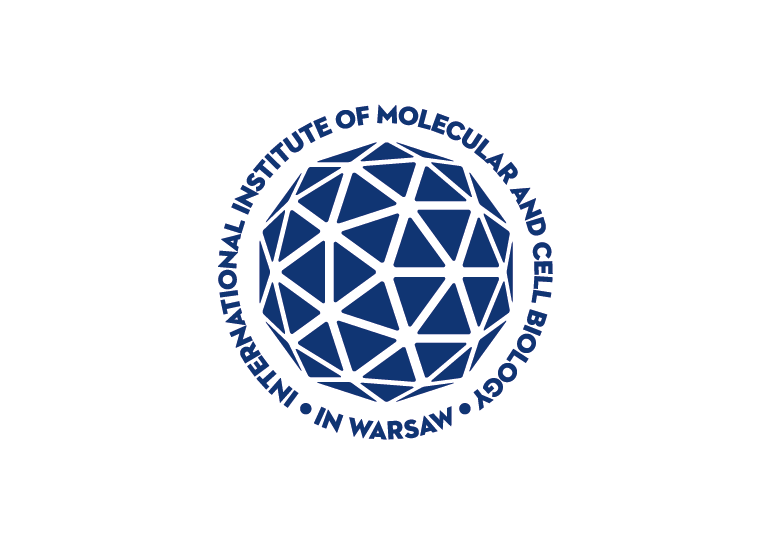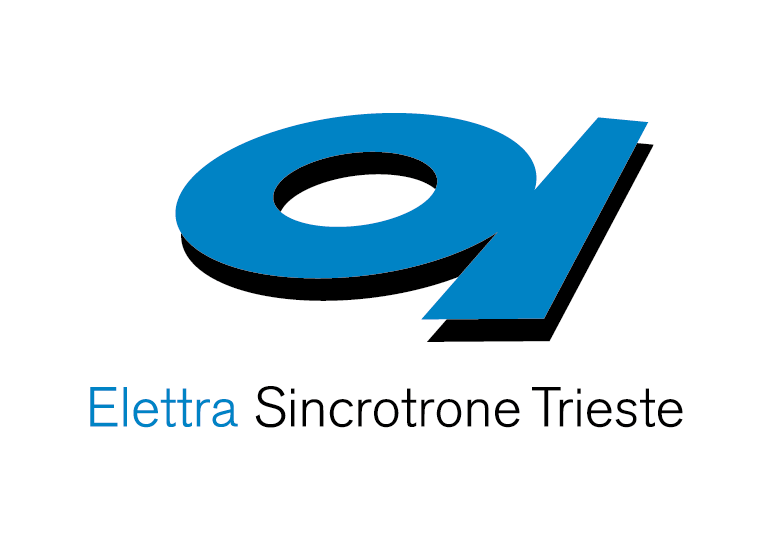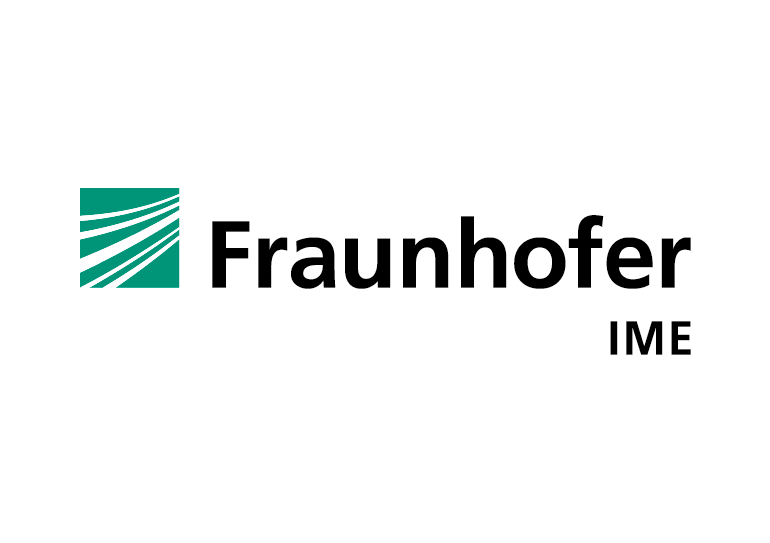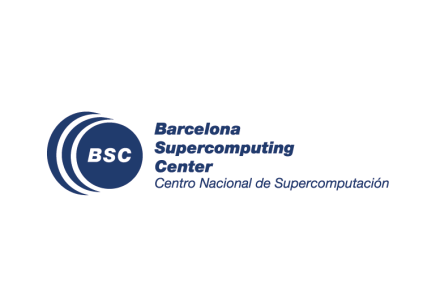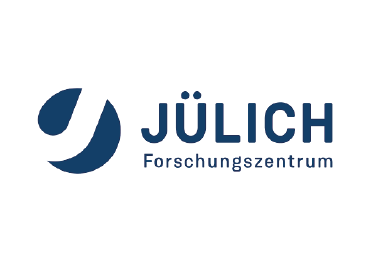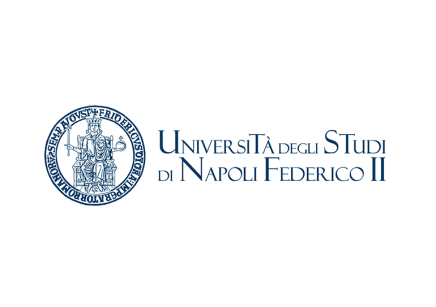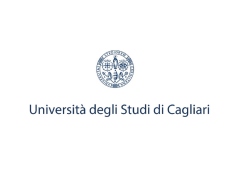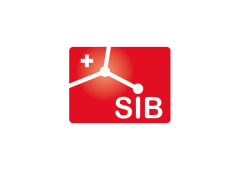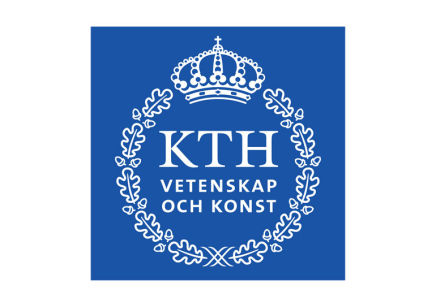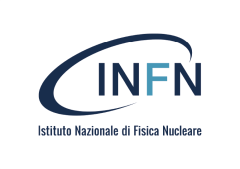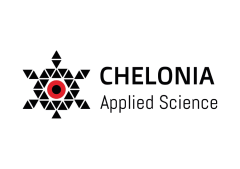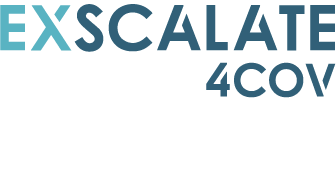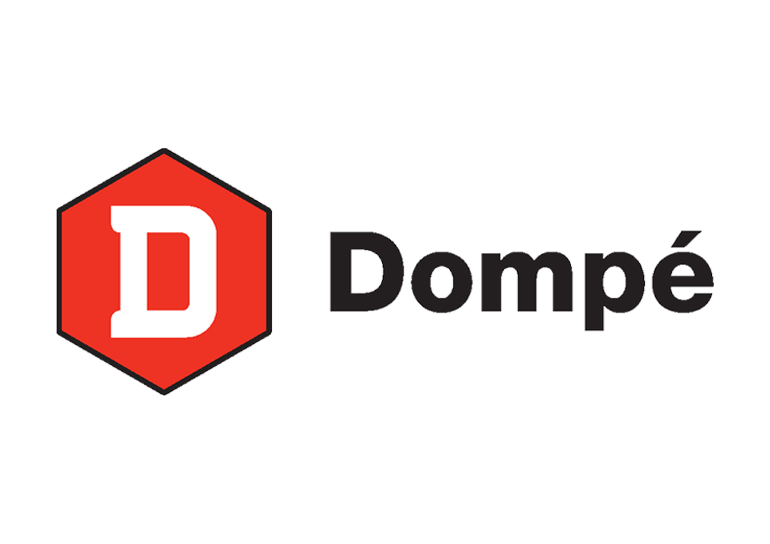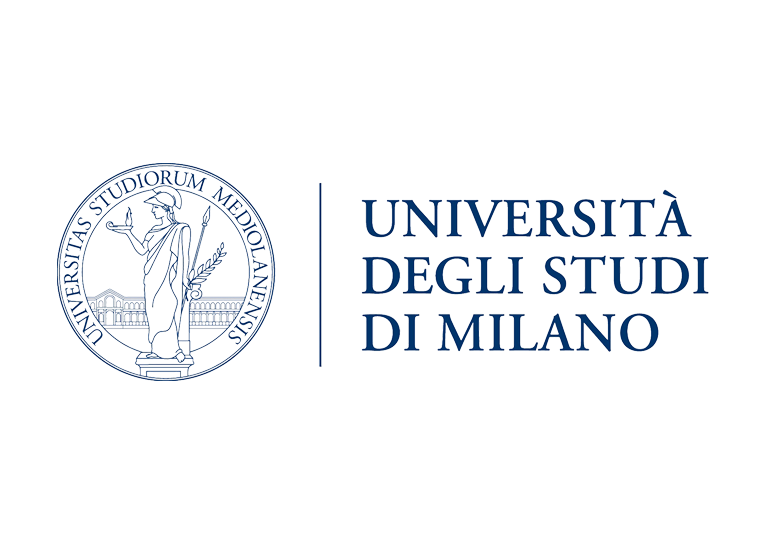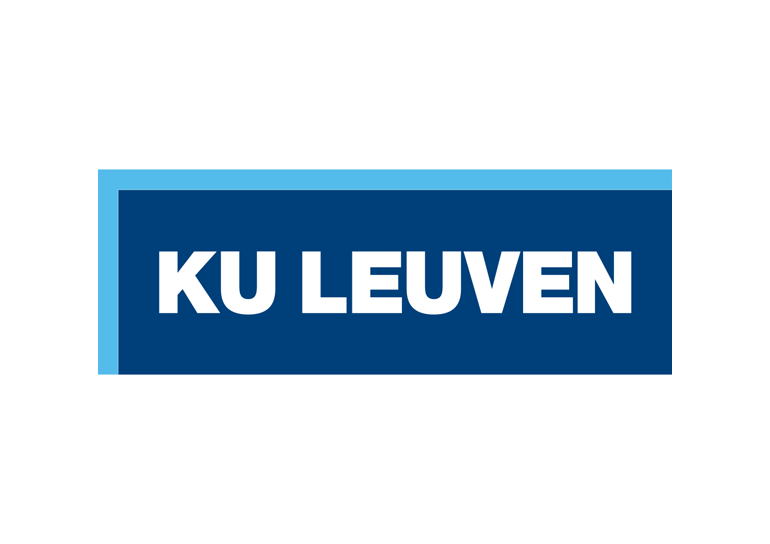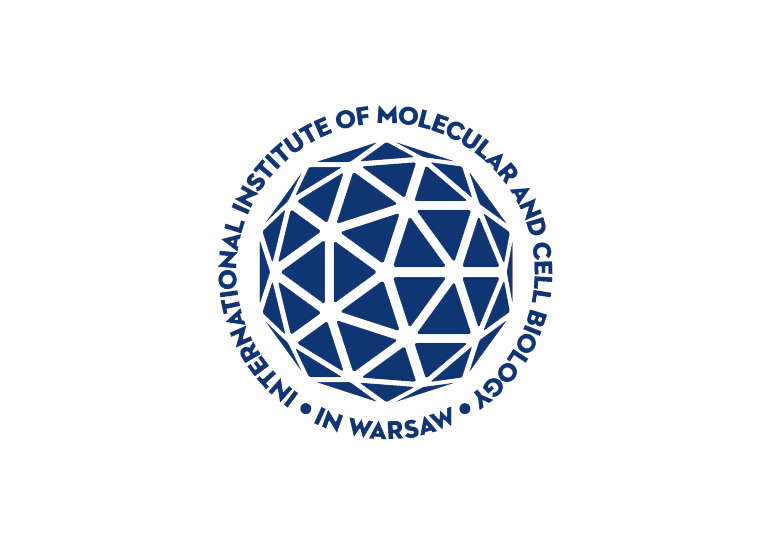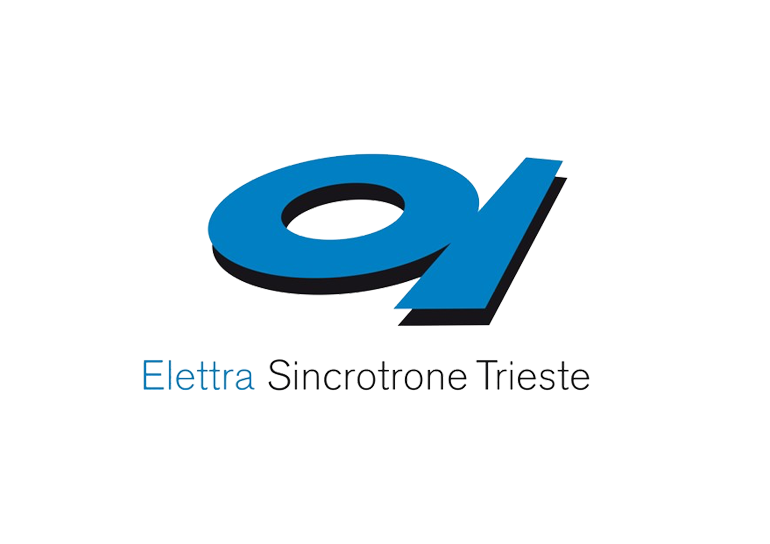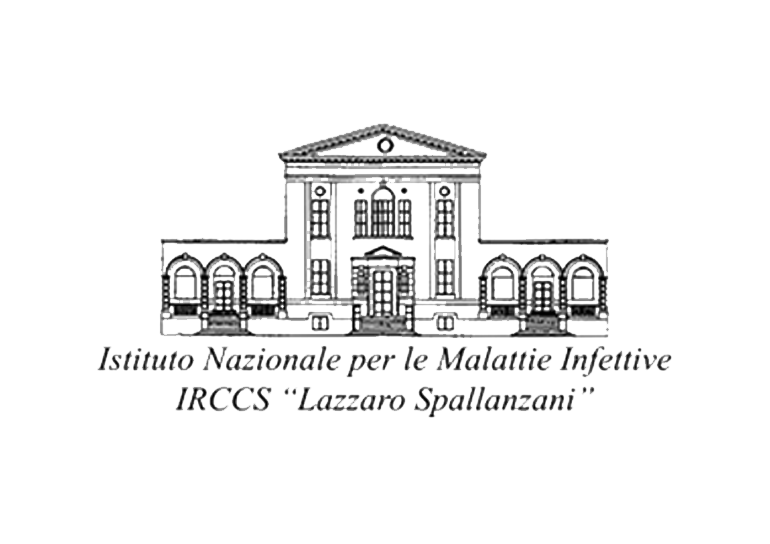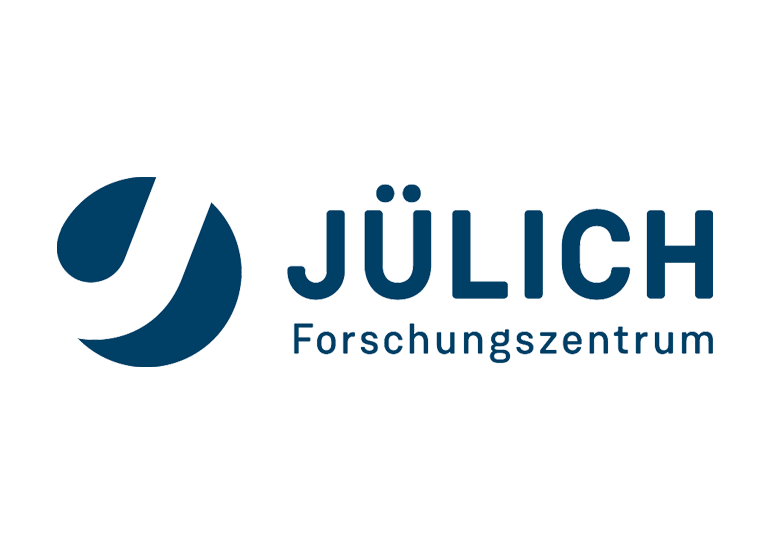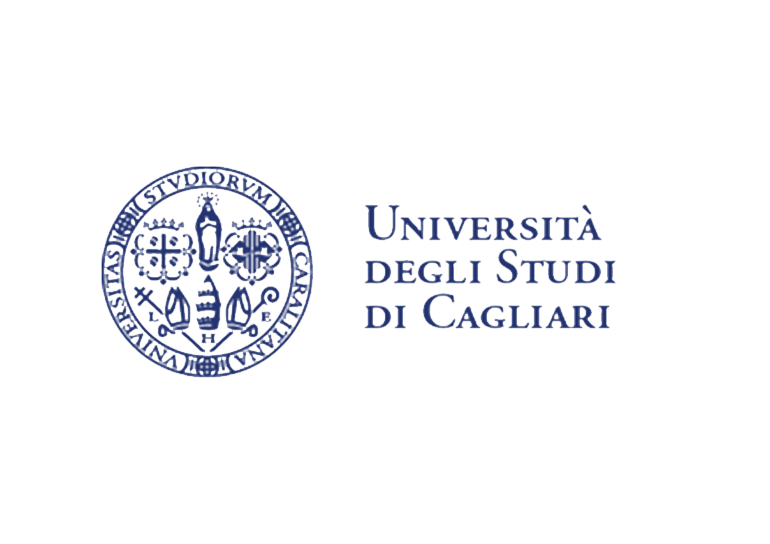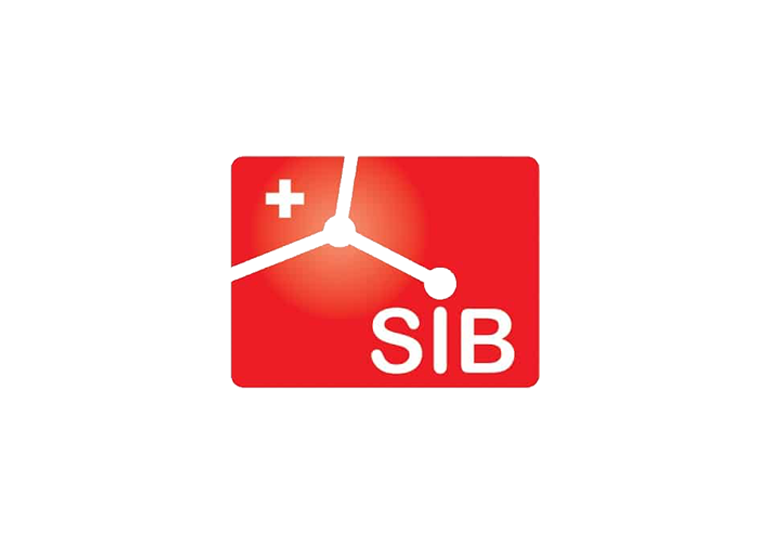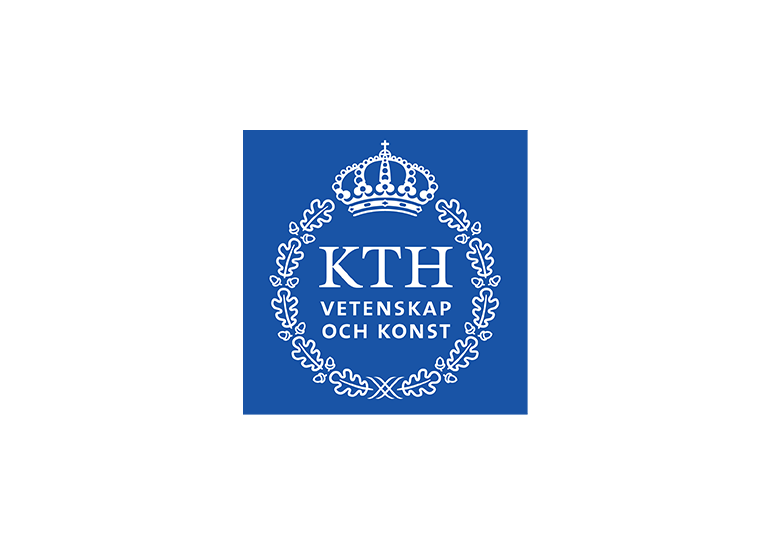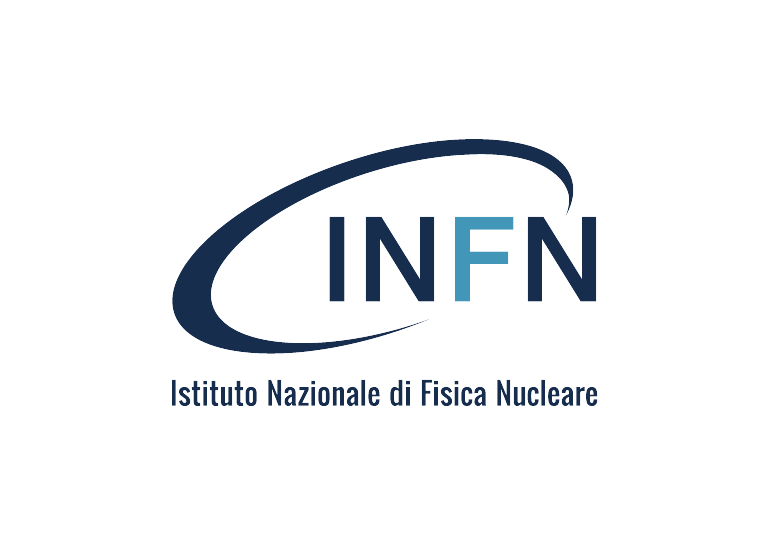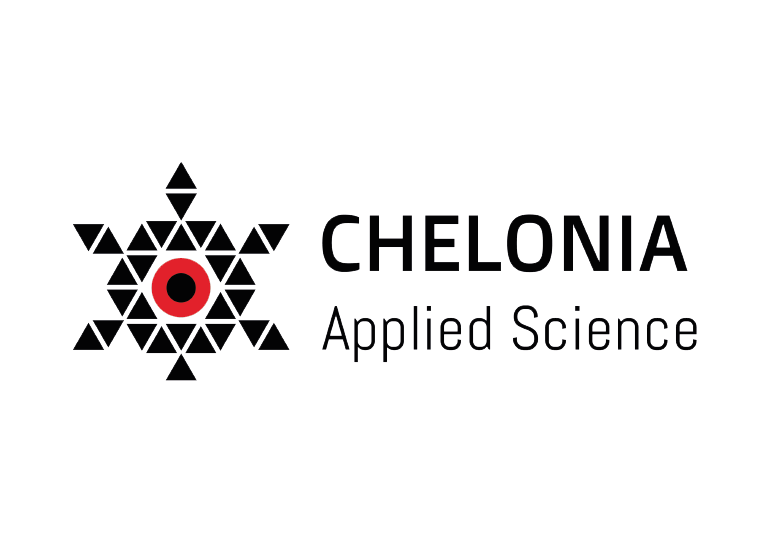The Exscalate4COV's Consortium coordinated by Dompé Farmaceutici , is composed by 18 institutions from seven European countries.
Dompé is an Italian bio-pharmaceutical company that focuses on innovation, where a long tradition in the field of personal wellness goes hand in hand with a commitment to research and development to meet hitherto unsatisfied therapeutic needs. Established in 1940 in Milan, Dompé maintains its headquarters in this city. In Italy, it also has offices in L’Aquila, with an industrial and biotech...
research hub, and in Naples, where the Company has an R&D division. Dompé also has branches in the United States (in Boston and San Francisco), in China and in Europe (in Barcelona, Berlin, Paris, and Tirana). Faced with an ever-changing pharmaceutical industry that is increasingly open to global challenges, Dompé has opted for a market positioning that is based on two strategic priorities.
Dompé is one of the leading pharmaceutical companies in Italy, dedicated to the development of innovative therapeutic solutions for rare and orphan diseases.
Main project task
DOMPE is the project coordinator
DOMPE will make the EXSCALATE Platform available to the project
DOMPE will perform the computer aided drug design
DOMPE will provide the viral proteins for biochemical experiments and for crystallograpy
Liaison with public Health officers (EMA)
DOMPE will supervise all the technical activities, especially from the perspective of platform integration and functional validation.
Persons Involved in the research activities
Andrea R. Beccari, (gender: male) Ph.D., currently responsible for the R&D Platforms and Services of Dompé Farmaceutici SpA. He led the drug discovery programs and then became responsible for the technological platform for R&D, supporting pharmaceutical research activities with computer-aided design, advanced modeling and large scale simulations in Dompé. Since 2015, he has been responsible for the Joint Bioinformatics Groups at the IBP Institute of the National Research Council of Italy. He was promoter and coordinator of the open innovation initiative: Italian Drug Discovery Network, and co-founder and member of the board of the Avicenna Alliance (Brussels), an association of industry and research institutions with the aim of overcoming limitations of the pre-digital era through the development of in silico simulations up to a scale necessary to provide personalized treatments and predictive medicine. He was the originator and chairman of the Computationally Driven Drug Discovery and Italian Drug Discovery Summit series of meetings. He has co-organized several initiatives with the European Commission and Parliament promoting the use of in silico simulation to increase the awareness of the potentiality of high performance computing in healthcare. He has 16 publications in peer review journals and 7 world patents.
Carmine Talarico, Ph.D., (gender: male) earned a degree in Pharmacy at the University “Magna Graecia” of Catanzaro in 2014 and earned a PhD in Life Sciences and Technologies (curriculum Pharmaceutical Sciences) at the University “Magna Graecia” of Catanzaro in 2017. In 2018, he was awarded with the Paul Ehrlich MedChem Euro-PhD Network Award of Excellence referring to his PhD thesis entitled “Evaluation and Application of Molecular Modeling Algorithms to relevant Pharmaceutical Targets”. Since 2017, he authored and is co-author of a book chapter and eleven scientific papers published in international journals. He has been working as a Computational Chemist at Dompé since 2018, and since 2019, is Project Leader of the PRACE Grant project called Antarex for Zika. The winning proposal (n° 2019204988) has been recognized as a clear societal impact that will harness the power of HPC to fight diseases that overwhelmingly affect developing countries.
Candida Manelfi (gender: female) earned a degree in Chemistry in 2006 at Rome University «La Sapienza». Since 2015, she has been a computational chemistry researcher with the Drug Discovery Platform at Dompé S.p.a., supporting the early drug discovery projects from target identification to candidate lead, and providing Chemoinformatics and Bioinformatics services such as compound library design and HTS data analysis. She is also part of the Joint Bioinformatics Group (JBG) at the Institute of Protein Biochemistry of CNR of Naples. Previously, she was an application specialist at S-IN Soluzioni Informatiche providing computer-assisted solutions in chemistry-related frameworks. From 2008 to 2011, she was a computational chemistry researcher at Angelini Research Center supporting research activities in Computer-Aided Drug Design. She participated in the H2020-FETHPC project ANTAREX (AutoTuning and Adaptivity appRoach for Energy efficient eXascale HPC systems), and she is co-PI to the PRACE Grant project called Antarex for Zika.
Relevant Publications: (Up to 5)
● Molecular mechanism and functional role of brefeldin A-mediated ADP-ribosylation of CtBP1/BARS. Colanzi A, Grimaldi G, Catara G, Valente C, Cericola C, Liberali P, Ronci M, Lalioti VS, Bruno A, Beccari AR, Urbani A, De Flora A, Nardini M, Bolognesi M, Luini A, Corda D. Proc Natl Acad Sci U S A. 2013 Jun 11; 110(24):9794-9. doi: 10.1073/pnas.1222413110. Epub 2013 May 28. PMID: 23716697PMID: 25385614
● State-of-the-art and dissemination of computational tools for drug-design purposes: a survey among Italian academics and industrial institutions. Artese A, Alcaro S, Moraca F, Reina R, Ventura M, Costantino G, Beccari AR, Ortuso F. Future Med Chem. 2013 May; 5(8):907-27. doi: 10.4155/fmc.13.59.
● LiGen: a high performance workflow for chemistry driven de novo design. Beccari AR, Cavazzoni C, Beato C, Costantino G. J Chem Inf Model. 2013 Jun 24; 53(6):1518-27. doi: 10.1021/ci400078g. Epub 2013 May 28.PMID: 23617275 PMID: 23682568
● Use of experimental design to optimize docking performance: the case of LiGenDock, the docking module of LiGen, a new de novo design program. Beato C, Beccari AR, Cavazzoni C, Lorenzi S, Costantino G. J Chem Inf Model. 2013 Jun 24; 53(6):1503-17. doi: 10.1021/ci400079k. Epub 2013 Apr 30. PMID: 23590204
● E. Vitali, D. Gadioli, G. Palermo, A. Beccari, C. Cavazzoni, C. Silvano. Exploiting OpenMP and OpenACC to accelerate a geometric approach to molecular docking in heterogeneous HPC nodes. The Journal of Supercomputing 75(7): 3374-3396. July 2019.
Relevant Projects: (Up to 5)
● Horizon 2020 Call: H2020-PHC-2014-two-stage Topic: PHC-13-2014 Proposal number: SEP-210176883 Proposal acronym: ALLOCHEM (first stage approved)
● SEVENTH FRAMEWORK PROGRAMME -THEME 4 – NMP Nanosciences, Nanotechnologies, Materials and new Production Technologies Project acronym: MAGNIFYCO ; Full project title: MAGNETIC NANOCONTAINERS FOR COMBINED HYPERTHERMIA AND CONTROLLED DRUG RELEASE; Grant agreement no.: CP-FP 228622-2 MAGNIFYCO, 2009-2013;
● SEVENTH FRAMEWORK PROGRAMME -THEME [HEALTH.2011.1.4-5] [New therapeutic approaches in chronic inflammatory and autoimmune diseases] Project acronym: TIMER Full project title: "TargetIng novel MEchanisms of Resolution in inflammation" Grant agreement no: 281608
● H2020-ANTAREX Project (2015 - 2018) The main goal of the ANTAREX project is to provide a breakthrough approach to express and enforce application self-adaptivity and customization for HPC systems up to the Exascale level.
● PRACE granted project called Antarex for Zika. The winning proposal (n° 2019204988) has been recognized as having a clear societal impact that will harness the power of HPC to fight diseases that overwhelmingly affect developing countries.
Infrastructures:
In EXSCALATE4CoV, DOMPE relies on the CINECA HPC infrastructure.
Politecnico di Milano (Milan, Italy) is the largest Technical University in Italy with more than 40,000 students. The project will involve personnel of the Dipartimento di Elettronica, Informazione e Bioingegneria (DEIB) http://www.deib.polimi.it/ which, with about 840 members, is one of the largest European ICT departments, both by size and quality of its research.
According to the QS World University Rankings 2015, POLIMI is the leading university in Italy in research subjects including Computer Science & Information Systems, and ranked seventh in Europe. POLIMI is a vital institution capable of promoting education, fundamental and applied research, and technology transfer to companies. Funding for the POLIMI research work has been garnered from a number of research projects with the Italian National Research Council, the Italian Ministry for Research and Education, national and international industry and the European Union. Research activities have been funded by EU-funded projects for 44%, National funded research for 16%, foreign public institutions 4%, and private companies 36%. Since 2009, the number of patents filed per year has ranged from 26 to 45. Research is the main focus of DEIB, pursued according to the highest international quality standards. DEIB has a broad network of partnerships with the best international institutions, which makes the Department one of the fundamental players in the worldwide scenario of scientific and technological innovation. Considering only DEIB, several labs are available that focus on specific topics of the research. In particular, in 2013, the labs were the following: 11 Bioengineering Labs, 12 Computer Science and Engineering and Systems and Control Labs, 7 Electrical Engineering Labs, 6 Electronics Labs, and 10 Telecommunications Labs, divided among 8 main facilities spread throughout the Lombardy region surrounding Milan. DEIB’s eco-system also includes the CEFRIEL technology transfer center and eleven spin-offs located in the incubator and many others surviving on the market, created by professors and former students, with a strong continuing relationship with POLIMI. More in detail, POLIMI will participate in this project with a multi-disciplinary group belonging specifically to the System Architecture (SAGroup) Group, the DEpendable Evolvable Pervasive Software Engineering (DEEP- SE), and the Artificial Intelligence Group. It is a cross-disciplinary research team with competencies covering system architectures, computing system design, design methodologies, compiler construction, machine learning, performance evaluation and distributed systems.
Main project task
POLIMI was the Project Coordinator of the H2020 FET-HPC ANTAREX project and one of the main drivers of the ANTAREX4ZIKA experiment on urgent computing against the Zika virua pandemic. POLIMI is one of the main developers of the EXSCALATE platform. In this project, POLIMI will lead Task 8.2 on the EXSCALATE platform tuning on the HPC resources. In particular, POLIMI will be responsible for the continuous code adaptation of the Geodock library targeting the different computing platforms.
Persons Involved in the research activities
Prof. Cristina Silvano, Ph.D. (gender: female) is currently Full Professor (with tenure) at Politecnico di Milano. From 2000 to 2002, she was an Assistant Professor at the University of Milano. From 1987 to 1996, she was with the R&D Labs of Group Bull (Pregnana, Italy) where she was part of the Bull-IBM joint team for the design of the first multiprocessor systems based on PowerPC processor architecture for the Bull Escala UNIX servers and IBM RS/6000 symmetric multiprocessor servers. She also spent several periods abroad as Visiting Engineer at Bull R&D Labs, Billerica (MA - USA), Visiting Engineer at VLSI Technology, in Munich (D) and in San Jose (CA-USA) and Visiting Engineer at IBM Somerset Design Center, Austin (TX-USA). She was Project Coordinator for FP7-216693- MULTICUBE project (2008-2010) and FP7-248716-2 PARMA project (2010-2013) – ranked as a success story at the EU level. She is currently project coordinator of the H2020- FET-ANTAREX. She was Principal Investigator of several industrial funded research projects in collaboration with STMicroelectronics. The proposed techniques have been applied to the Lx/ST200 family of VLIW embedded processor cores (developed as a partnership between HP Labs and STMicroelectronics). The ST200 family is used today for embedded media processing in a variety of audio, video and imaging consumer products. She also participated in several international and national projects (such as FP7-CONTREX, ARTEMIS-SMECY, FP7- COMPLEX, MEDEA+/LOMOSA). Her research focuses on Computer Architecture and Electronic Design Automation, with particular emphasis on power-aware design and design space exploration of embedded architectures, adaptive design and monitoring of applications for manycore architectures, Networks-on-Chip and technology-aware manycore architectures. She has published more than 140 papers in conference proceedings, international books and top-ranked international journals (including 18 IEEE/ACM Transactions). She is co-author of the scientific book: “Power Estimation and Optimization Methodologies for VLIW -based Embedded Systems”, published by Kluwer Academic Publisher (2003), and co-editor of three scientific books published by Springer. She is inventor or co-inventor of 11 international patents (7 out of 11 already granted). Based on Google Scholar, her h- index is 31 and the total number of citations is 3,800. She regularly serves on the Program Committees of several top-ranked international conferences (such as ICCAD, DAC, DATE, NOCS, HPCA, MICRO, ASAP, FPL). She has also organized several international conferences/workshops as Program Chair or General Chair. She has served as Independent Expert Reviewer for the European Commission and for several science foundations, such as the Agence National de la Recherche (F), INRIA (F) and the Academy of Finland. She has been invited to give several talks/seminars/panels all over the world. She is a senior member of IEEE, IEEE fellow and member of the HiPEAC Network of Excellence.
Prof. Gianluca Palermo, Ph.D. (gender: male) He received an M.S. degree in Electronic Engineering in 2002 (Advisor Prof. M. Sami), and a Ph.D. degree in Computer Engineering in 2006 from Politecnico di Milano. The Ph.D. thesis on Design Methodologies for Embedded Architectures based on Networks on-Chips was awarded with the Chorafas Foundation prize. He is currently an Associate Professor (with tenure) at the Department of Electronics, Information and Bioengineering at the same university. Previously, he was a Consultant Engineer in the Low Power Design Group of AST - STMicroelectronics (Agrate, Italy), working on Networks on-Chip and Research Assistant at the Advanced Learning and Research Institute (ALaRI) of the Università della Svizzera Italiana (Lugano, Switzerland). He participated in several EU projects (MEDEA+/LoMoSA, FP7-MULTICUBE, FP7- 2PARMA, FP7-COMPLEX, ARTEMIS-SMECY , FP7- CONTREX, H2020- ANTAREX), also acting as deputy-coordinator and Work Package Leader in three of them. He is an active member of the scientific community by regularly serving as PC-member of conferences and workshops, and as reviewer in all the top-level journals in his research field. He served as a panel member of the evaluation boards of Academy of Finland and proposal reviewer for the Singapore Ministry of Education. He worked on various research topics in the field of design methodologies and architectures for embedded and high performance computing systems focusing his attention on Networks on-Chip, multi/many- cores architectures, Near Threshold Computing (NTC) architectures, architectures for irregular applications and application-level autotuning. Since 2003, he has published over 100 research papers, including top-level journals and conferences. Additionally, he is co-inventor of 2 international patents and is co-editor of a Springer book on “Low-Power Networks on-Chip”. According to Google Scholar, he collected more than 2900 citations, reaching an h- index of 30.
Relevant Publications:
1. Ashouri, A.H., Mariani, G., Palermo, G., Park, E., Cavazos, J., Silvano, C.: COBAYN: Compiler Autotuning Framework Using Bayesian Networks. ACM Transactions on Architecture and Code Optimization (TACO), 13(2), 21:1-21:25, (2016).
2. E. Vitali, D. Gadioli, G. Palermo, A. Beccari, C. Cavazzoni, C. Silvano. Exploiting OpenMP and OpenACC to accelerate a geometric approach to molecular docking in heterogeneous HPC nodes. The Journal of Supercomputing 75(7): 3374-3396. July 2019.
3. Amir H. Ashouri, William Killian, John Cavazos, Gianluca Palermo, Cristina Silvano: A Survey on Compiler Autotuning using Machine Learning. ACM Comput. Surv. 51(5): 96:1-96:42 (2019).
4. Davide Gadioli, Emanuele Vitali, Gianluca Palermo, Cristina Silvano: “mARGOt: A Dynamic Autotuning Framework for Self-Aware Approximate Computing.” IEEE Transactions on Computers. Volume 68 Issue 5, pp. 713-728, 2019.
5. Cristina Silvano et al. The ANTAREX approach to autotuning and adaptivity for energy efficient HPC systems. In Proceedings of the ACM International Conference on Computing Frontiers (CF ’16). 2016, pp. 288–293.
Relevant Projects:
1. Project Coordinator of the H2020-ANTAREX Project (2015 - 2018) The main goal of the ANTAREX project is to provide a breakthrough approach to express and enforce application self-adaptivity and customization for HPC systems up to the Exascale level.
2. Project Participant H2020-ATMOSPHERE EU-BRA Project (2017 - 2019) - ATMOSPHERE aims to design and implement a framework and platform relying on lightweight virtualization, hybrid resources and Europe and Brazil federated infrastructures to develop, build, deploy, measure and evolve trustworthy, cloud-enabled applications.
3. Project Coordinator of the FP7-HARPA Project (2013 - 2017) - The objective is to enable next-generation embedded and high-performance heterogeneous many-cores to cost-effectively confront variations by providing dependable performance.
4. Project Coordinator of the FP7-2PARMA Project (2010 - 2013) - The 2PARMA project focuses on the definition of a parallel programming model, run-time resource management policies, and mechanisms and design space exploration methodologies for Many-core Computing Fabric.
5. Project Coordinator of the FP7-MULTICUBE Project (2008 - 2010) - The project aimed to define innovative methods for the design optimization of computer architectures for a broad domain from embedded computing system to HPC.
Infrastructures:
POLIMI infrastructure to be dedicated to the project consists of several workstations for simulation and code development, development boards, and several FPGA-based hardware for fast prototyping. During the project, POLIMI will acquire more recent hardware (in terms of a couple of computing nodes), especially because of the computing demands of the design tools to target HPC systems.
Cineca, established in 1969, is a non-profit consortium of 70 Italian Universities, 9 national research institutions, and the Ministry of Education, University and Research (MIUR). Cineca is the largest Italian supercomputing center with an HPC environment, equipped with cutting-edge technology and highly-qualified personnel, which cooperates with researchers in the use of the HPC infrastructure in both academic and industrial fields.
Cineca’s mission is to enable the Italian and European research community to accelerate scientific discovery using HPC resources in a profitable way, exploiting the newest technological advances in HPC, data management, storage systems, tools, services and expertise at large.
On the mandate of the Ministry of University and Research, Cineca represents Italy in PRACE, the Partnership for Advanced Computing in Europe (www.prace-ri.eu), a persistent pan-European Research Infrastructure (RI) providing leading HPC resources to enable world-class science and engineering for academia and industry in Europe. Cineca has been one of the four PRACE Tier-0 Hosting CenterCenters.Since June 2014.
Cineca is one of the founding members of the European Technology Platform for HPC (ETP4HPC), an industry led forum providing a framework for stakeholders to define research priorities and action plans on a number of technological areas where achieving EU growth, competitiveness and sustainability requires major research and technological advances in the medium- to long-term period. Moreover Cineca HPC Department is the Italian representative in the pan-European EUDAT Collaborative Data e-Infrastructure and a core partner in the Human Brain Project, the EU flagship project facing the big challenge of understanding the human brain.
More recently, Cineca has been selected as a hosting entity of one of the future EuroHPC precursors to exascale European supercomputers.
Besides the national scientific HPC facility, Cineca manages and exploits the supercomputing facility of the Italian energy company (ENI).
The HPC Department in Cineca has a long experience in cooperating with the researchers in paralleling, enabling and scaling-up their applications in different computational disciplines covering the subjects of condensed matter physics, astrophysics, geophysics, chemistry, earth sciences, engineering, CFD, mathematics, life sciences and bioinformatics, as well as “non-traditional” subjects, such as biomedicine, archaeology and data-analytics. Cineca has a strong relationship with its own stakeholders and collaborates with the various scientific communities to enable and develop new applications and tools to better address the challenges of the High-end HPC systems. Cineca has broad experience in providing education and training in the different fields of parallel computing and computational sciences, and is one of the six PRACE Advanced Training CenterCenters (PATCs).
Finally, Cineca has a long history in co-design, deployment and management, high TRL (6 to 8) HPC prototypes, like the hot water cooled heterogeneous Eurora system that was ranked in 1st place of the green 500 in June 2013, and the most recent DAVIDE OpenPower system.
Main project task
Cineca coordinates the WP8 regarding HPC production and application tuning. The main activity focus will be on the setup of a proper CADD production environment both on PRACE Tier-0 systems (Marconi, Mare Nostrum, Jureca) and EuroHPC pre-exascale systems (when available in 2021). Moreover, Cineca will provide high level support on the LiGen suite and wider scope support, including troubleshooting, on the usage of the system itself.
Persons Involved in the research activities
Carlo Cavazzoni, Ph.D. (gender: male) earned a degree in Physics from the University of Modena in 1994, and earned a PhD at the International School for Advanced Studies (ISAS-SISSA) of Trieste in 1998. He is presently head of R&D of the Cineca High Performance Computing department and responsible for the evolution and exploitation of the HPC infrastructure. He also has an active role in international institutions: he is a steering board member of the European Technology Platform for High Performance Computing (ETP4HPC) association, a member of the Research and Innovation Advisory Group (RIAG) of EuroHPC JU, and he is responsible for applications and architecture co-design in the MAX European Center of Excellence. Regarding research activities, Carlo Cavazzoni collaborates with different user communities to enable applications on massively parallel systems and innovative architecture solutions, he is responsible for the parallel design of the QUANTUM ESPRESSO suite of codes, and he is the author and co-author of several papers published in prestigious international reviews including Science, Physical Review Letters, Nature Materials, and many others. He was responsible for the co-design and exploitation of the EURORA PRACE 2IP prototype and D.A.V.I.D.E. PRACE 3IP PCP prototype.
Federico Ficarelli, MSc (gender: male) earned a degree in Computer Science at the University of Milan in 2008. He is currently a senior HPC software engineer in the High Performance Computing dept. at Cineca, where he led several co-design and development activities of the industrial R&D team, mainly in the oil and gas segment. He is now involved in several research projects where he is responsible for application and hardware-software co-design activities focusing on novel computing architectures, programming paradigms for heterogeneous platforms and compiler technologies.
Maurizio Ortali, MSc (gender: male) holds a degree in Physics from University of Bologna. He is a Senior Project Manager (PMP certified since 2008) involved in several national and international projects on e-health, clinical research and healthcare. He has longstanding experience in the design, development and management of innovative IT solutions for data collection and data analytics, epidemiological registries, clinical research and collaborative networking environments.
Relevant Publications: (Up to 5)
1. F. Fraternali, A. Bartolini, C. Cavazzoni, L. Benini, Quantifying the impact of variability and heterogeneity on the energy efficiency for a next-generation ultra-green supercomputer, IEEE Transactions on Parallel and Distributed Systems (2017).
2. Andrea Rosario Beccari, Carlo Cavazzoni, Claudia Beato, Gabriele Costantino, LiGen: A High Performance Workflow for Chemistry Driven de Novo Design, April 2013 Journal of Chemical Information and Modeling 53(6), DOI: 10.1021/ci400078g.
3. C. Cavazzoni et al. Superionic and Metallic States of Water and Ammonia at Giant Planet Conditions, Science 283(5398):44-6, February 1999, DOI: 10.1126/science.283.5398.44.
4. C. Cavazzoni, EURORA: a European architecture toward exascale, Future HPC '12 Proceedings of the Future HPC Systems: the Challenges of Power-Constrained Performance, Article No. 1, Venice, Italy — June 25 - 25, 2012, ISBN: 978-1-4503-1453-4, DOI: 10.1145/2322156.2322157.
5. QUANTUM ESPRESSO: a modular and open-source software project for quantum simulations of materials, P. Giannozzi, C. Cavazzoni, et al., J. Phys.: Condens. Matter 21, 395502 (2009).
Relevant Projects: (Up to 5)
With the mandate of the national Ministry of Education, University and Research, MIUR, CINECA represents Italy in PRACE, the pan-European ESFRI e-infrastructure for HPC, being one of the four PRACE Tier-0 Hosting Members, and is one of the founding members of the ETP for High Performance computing, ETP4HPC, an industry led forum providing a framework for stakeholders to define research priorities and action plans in a number of technological areas where achieving EU growth, competitiveness and sustainability requires major research and technological advances in the medium to long term. Moreover, CINECA is the Italian representative in the pan-European EUDAT Collaborative Data e-Infrastructure, and core partner in the Human Brain Project, the EU flagship initiative facing the great challenge of understanding the human brain. CINECA has several years of experience in EU funded projects, dating from FP3. In H2020, it was and is a core partner in the PRACE 5IP (www.prace-ri.eu), EUDAT (www.eudat.eu), HPC-Europa3 (www.hpc-europa.eu), MONTBLANC2, DEEP-ER, FORTISSIMO, and in some National and Regional projects, such as EPIGEN and NEXDATA.
Infrastructures:
The current Cineca HPC infrastructure offers:
● PRACE Tier-0 Marconi system integrating two modules, one based on the Lenovo NeXtScale system equipped with Intel Xeon SkyLake E8160 (3500 nodes), and one based on IBM Power9 nodes featuring 4 Nvidia V100 accelerators per node (1000 nodes), for a total peak performance greater than 40PFlops.
● PRACE Tier-1 Galileo system, 1080 Lenovo NeXtScale nodes, with Intel Xeon Broadwell processor, with 36 cores and 256GBytes of RAM each.
● Starting from the end of 2020: EuroHPC pre-exascale Leonardo system. Details are not disclosed yet, but it has been announced that it will feature an accelerated partition and a data-centric partition.
The mission of the University of Milan, established in 1924, is to contribute to society through the pursuit of teaching/education and research at the highest international levels of excellence. It is the only Italian member among the 23 prestigious Universities of the League of European Research Universities (LERU).
With a teaching staff of about 2,200 tenured professors, and with almost 60,000 students, the University of Milan is the largest university in Lombardy, one of the most dynamic and internationally-oriented EU regions. Research activities are conducted in 33 Departments and 22 Inter-departmental Research CenterCenters, with more than 24,000 scientific publications in the last three years, 222 patent families and 24 active spin-offs. 5 scientists from the University have been ranked as highly cited by the ISI – Institute for Scientific Information (USA). The University of Milan is constantly developing projects in cooperation with some of the most relevant international research groups, often acting as activities coordinator, and EU programs represent a major source of funding for the University of Milan. In particular, the project will involve the Department of Pharmaceutical Sciences (DISFARM), which comprises multidisciplinary expertise in medicinal chemistry, organic chemistry, pharmaceutical technology, legislation and pharmacology, which favor the promotion and coordination of interdisciplinary research lines in the framework of pharmaceutical sciences. The research at DISFARM covers a broad range of activities focused on the design, synthesis, development, biological evaluation and control of novel biologically active molecules, and of new pharmaceutical drug delivery systems, food supplements, cosmetics, biocides and medical devices. In detail, UNIMI will participate in the project with a scientific group with competencies in computational approaches as applied to pharmaceutical sciences, with special focus on virtual screening approaches and software development.
Main project task
UNIMI will be involved in the analysis, validation and optimization of the virtual screening campaigns by developing targeted consensus models able to enhance the performances of the performed simulations. In detail, these methods will allow identification of the optimal docking protocols as well as of the best-performing protein targets (and their relevant conformations) to be utilized in the subsequent simulations.
Persons Involved in the research activities
Prof. Giulio Vistoli, Ph.D., (gender: male) is currently a Full Professor in Medicinal chemistry at the University of Milan. He received his degree in medicinal chemistry at University of Milan in 1994. During his PhD studies, he spent a period in Lausanne under the supervision of Prof. B. Testa with whom he has fruitfully collaborated since 1996. In 1999, he became Assistant Professor in medicinal chemistry at University of Milan, to be promoted to Associate Professor in 2010 and Full Professor in 2019. His expertise involves the computational approaches, as applied to pharmaceutical sciences in their broadest sense, ranging from homology modeling and virtual screening to ADME predictions or drug delivery optimization. His recent research focuses on the development of new docking approaches to be used in both correlative analyses and virtual screening campaigns, as well as in the rational design of selective and bioavailable scavengers of reactive carbonyl species. He is co-Author of more than 160 scientific publications (H-index = 30, citations = 4250).
Prof. Alessandro Pedretti, Ph.D., (gender: male) is currently Associate Professor of Medicinal Chemistry at the University of Milan. After earning his Degree (M. Sc.) in Pharmaceutical Chemistry and Technology (Chimica e Tecnologie Farmaceutiche) from Università degli Studi di Milano in 1995, he received a PhD in Pharmaceutical Sciences from Università degli Studi di Milano in November 2000. Then, he became Assistant Professor in medicinal chemistry at University of Milan in 2001, becoming an Associate Professor in Medicinal Chemistry at the same university in 2015. Alessandro Pedretti’s research activity is mainly focused on in silico approaches for the rational design of novel bioactive molecules, and on the development of software tools for molecular modeling. In detail, he developed VEGA ZZ (available at www.vegazz.net), a software package able to build, visualize, optimize and analyze 3D structures. Thanks to its user-friendly graphic interface, this software has a large number of registered users (more than 22,000), ranging from professional researchers to students, who are approaching molecular modeling for the first time. Alessandro Pedretti’s research activity has led to more than 80 articles published in peer-reviewed international journals and 6 book chapters and, based on Google Scholar, his H-Index is 26, collecting 2939 citations.
Relevant Publications: (Up to 5)
1. Pedretti, A., Mazzolari, A., Gervasoni, S., Vistoli, G. Rescoring and linearly combining: A highly effective consensus strategy for virtual screening campaigns (2019), International Journal of Molecular Sciences, 20 (9), art. no. 2060.
2. Mazzolari, A., Afzal, A.M., Pedretti, A., Testa, B., Vistoli, G., Bender, A. Prediction of UGT-mediated Metabolism Using the Manually Curated MetaQSAR Database (2019), ACS Medicinal Chemistry Letters, 10 (4), 633-638.
3. Pedretti, A., Mazzolari, A., Vistoli, G., Testa, B. MetaQSAR: An Integrated Database Engine to Manage and Analyze Metabolic Data (2018), Journal of Medicinal Chemistry, 61 (3), 1019-1030.
4. Anderson, E.J., Vistoli, G., Katunga, L.A., Funai, K., Regazzoni, L., Blake Monroe, T., Gilardoni, E., Cannizzaro, L., Colzani, M., De Maddis, D., Rossoni, G., Canevotti, R., Gagliardi, S., Carini, M., Aldini, G. A carnosine analog mitigates metabolic disorders of obesity by reducing carbonyl stress (2018) Journal of Clinical Investigation, 128 (12), 5280-5293.
5. Vistoli, G., Mazzolari, A., Testa, B., Pedretti, A. Binding Space Concept: A New Approach to Enhance the Reliability of Docking Scores and Its Application to Predicting Butyrylcholinesterase Hydrolytic Activity (2017) Journal of Chemical Information and Modeling, 57 (7), 1691-1702.
Relevant Projects: (Up to 5)
1. Project Participant for H2020-MSCA-ITN-2015 in project “MASS Spectrometry TRaining network for Protein Lipid adduct Analysis”
2. Project Participant for Erasmus + Programme – Key Action 2 (KA2) – Cooperation for innovation and the exchange of good practices, Call for Proposals EAC/A03/2018 – European Universities in project “4EU+” of which Prof. Giulio Vistoli is a coordinator for UNIMI for the flagship related to computer science
3. Project Participant for FET 2018-2020 in the NoPest Project: Novel pesticides for a sustainable Agriculture
4. Project Participant for H2020-MSCA-ITN-2019 for the TubInTrain project: Tuning Tubulin dynamics and interactions to face neurotoxicity: a multidisciplinary Approach for training and research.
Infrastructures:
UNIMI dedicates a technological platform named INDACO to the project, aimed at supporting scientific research with easily shareable computing resources characterized by a prompt availability, on-demand tenability and a locally managed resource allocation system, based on a moderately-parallel architecture. In particular, INDACO includes 16 calculation nodes for HPCs equipped with two Intel Xeon E5-2683V4 CPUs, organized into Light (256 Gb Ram), Fat (1 Tb Ram), GPU (256 Gb Ram, 2x GPU K40), and RTX (16 Gb of Ram and 2x GPU RTX 2080 Ti) nodes. Additionally, UNIMI can dedicate several workstations for simulations and code development. In consideration of its remarkable computing demands, UNIMI will acquire more recent hardware to be completely dedicated to the project.
KU LEUVEN is the largest university in Belgium in terms of research funding and expenditure, ranking 45th in the Times Higher Education ranking (2020) of worldwide universities, and 1st as European University in the Reuters Top 100 of the World’s most innovative institutions. KU LEUVEN ranks 6th in the league of HES institutions participating in FP7, and takes 9th place of European institutions hosting ERC grants.
KU LEUVEN employs ~8,700 researchers on its academic staff (2014). KU LEUVEN Research & Development (LRD) is the technology transfer office (TTO) of KU LEUVEN, where a multidisciplinary team of experts guides researchers in their interaction with industry and society, and the valorization of their research results (101 spin offs). The focus of the Neyts laboratory (www.antivirals.be) is on the development of novel antiviral and vaccine strategies against a number of RNA viruses including HCV, flaviviruses (such as dengue and Zika), picornaviruses (rhino- and enteroviruses), chikungunya virus, rabies, RSV, norovirus and others. Three anti-HCV molecules discovered in this lab have made it to advanced clinical trials. Currently, a class of potent pan-serotype dengue virus inhibitors discovered in this lab is now being jointly developed with Janssen Pharmaceutica, and a class of rhino/enterovirus inhibitors discovered in this laboratory is being developed together with Novartis. In recent years, besides the development of small molecule inhibitors, the laboratory has developed a novel vaccine strategy that allows efficient launch of the genomes of flavi-, picorna and other viruses from an easily-inducible and scalable bacterial artificial chromosome (WO2014174078A1). This robust technology, which has been extensively validated, lays at the basis of this application. The lab counts 15 PhD students, 7 post-docs, 10 lab technicians, 1 research expert, 1 scientist, 1 research manager and 2 industrial research managers.
Main project task
KU LEUVEN will be responsible for the evaluation of the antiviral effect of compounds against COVID-19 in a virus-cell-based phenotypic assay during the primary screen, biological validation (secondary screen) and will be assisting with the broad-spectrum evaluation of the potential antiviral activity against other viruses as well.
Persons Involved in the research activities
J. Neyts – Full professor (gender: male) will act as Project Coordinator, the top supervisor for the scientific and management activities of the project. He obtained his PhD degree in the field of antiviral drug development in 1993 from the University of Leuven. He did a post-doc at the University of North Carolina at Chapel Hill (1995-1996). In 1999, he was appointed a to faculty position at KU LEUVEN and rose through the ranks to become full professor. He teaches medical virology at the school of medicine and dentistry. The focus of his work is on the development of novel antiviral and vaccination strategies against multiple viruses. He has been/is a partner in one EU FP5 project, in 4 EU FP6 projects and in 7 EU FP7 projects. In 2009, he co-founded the University spin-off company Okapi Sciences (developing antivirals for veterinary use), which was acquired by Aratana Therapeutics 5 years later. He is editor of the journal Antiviral Research, and president-elect of the International Society for Antiviral Research. Four classes of antivirals that have been discovered in his laboratory have been licensed to major pharmaceutical companies (2 on HCV, one on dengue and one on rhino/enteroviruses). He has published over 370 manuscripts in peer review journals and has given 150 invited lectures; h-index: 48; Citations: 10,050. Full reference list via www.antivirals.be.
P. Leyssen – (gender: male) PhD in Virology (2003),is senior industrial research manager on the Neyts team. He will manage the administrative side of the project and, in the lab, will manage the activities that will be performed on the Caps-It isolator system.
D. Jochmans – (gender: male) PhD in Virology,is a senior research manager on the Neyts team. He will be in charge of the in-lab management of part of the project, and will assist with the project administration.
HJ. Thibaut – (gender: male) PhD in Virology, is a senior postdoctoral researcher on the Neyts team. He will be in charge of the in-lab management of part of the project.
W. Chiu – (gender: male) is an industrial engineer and specialist operator of the Caps-It isolator system.
Relevant Publications
1. Sun L, Tijsma A, Mirabelli C, Baggen J, Wahedi M, Franco D, De Palma A, Leyssen P, Verbeken E, van Kuppeveld FJM, Neyts J, Thibaut HJ. (2019) Intra-host emergence of an enterovirus A71 variant with enhanced PSGL1 usage and neurovirulence. Emerg. Microbes Infect. 8(1):1076-1085. doi: 10.1080/22221751.2019.1644142. (Impact factor: 6.21).
2. Abdelnabi R., Geraets J.A., Ma Y., Mirabelli C., Flatt J.W., Domanska A., Delang L., Jochmans D., Kumar T.A., Jayaprakash V., Sinha B.N., Leyssen P., Butcher S.J., Neyts J. (2019) A novel druggable interprotomer pocket in the capsid of rhino- and enteroviruses. PLoS Biology, 17(6):e3000281 https://doi.org/10.1371/journal.pbio.3000281 (Impact factor: 9.2).
3. Sun L, Lee H, Thibaut H, Lanko K, Rivero-Bucetac E, Bator C, Martinez-Gualda B, Dallmeier K, Delang L, Leyssen P, Gagod F, San-Félix A, Hafenstein S, Mirabelli C, Neyts J. (2019) Viral engagement with host (co-)receptors blocked by a novel class of tryptophan dendrimers that targets the 5-fold-axis of the enterovirus-A71 capsid. PLoS Pathogens, 15 (5), doi: 10.1371/journal.ppat.1007760. (Impact factor 6.16).
4. Bardiot D., Koukni M., Smets W., Carlens G., McNaughton M., Kaptein S., Dallmeier K., Chaltin P., Neyts J., Marchand A. (2018). Discovery of indole derivatives as novel and potent dengue virus inhibitors. Journal of Medicinal Chemistry, 61 (18), 8390-8401. doi: 10.1021/acs.jmedchem.8b00913. (Impact factor: 6.25).
5. Debing Y., Schmid MA., Neyts J. (2018). New models to study hepatitis E virus replication and particular characteristics of infection: The needle hides in the haystack. Gastroenterology, 154 (1), Art.No. S0016-5085(17)36372-2, 20-22. doi: 10.1053/j.gastro.2017.11.014. (Impact factor: 20.77).
Relevant Projects: (Up to 5)
1. Partner in the EU FP7 funded consortium ASKLEPIOS (www.asklepiosfp7.eu): Understanding of the mechanisms that govern pathogenesis of rabies virus infection and pursuit of therapeutics.
2. Partner in the EU FP7 funded consortium AIROPico (www.airopico.eu) an Industry-Academia Partnerships and Pathways project (IAPP) to provide interdisciplinary education and training to company researchers and university scientists on picornavirus biology, diagnostics and therapy development.
3. Partner in the EU FP7 funded consortium ANTIVIRALS (www.hactar.phrmy.cf.ac.uk/antivirals) a European Training Network on Antiviral Drug Development (and partner in 4 more EU FP7 projects)
4. PI of two Wellcome Trust Funded Seeding Drug Discovery Projects (2009-2012 and 2013-2016): Develop candidate antiviral drugs for the prevention and treatment of dengue infections.
5. PI of a Wellcome Trust Funded Seeding Drug Discovery Project (2015-2017): Development of small molecule directly acting non-entry inhibitors against the human respiratory syncytial virus.
6. Coordinator of the Horizon 2020 funded consortium RABYD-VAX (https://rabyd-vax.eu/): development of a dual rabies-yellow fever vaccine based on proprietary PLAVV technology.
Infrastructures:
The Neyts Laboratory has all necessary infrastructure available to carry out the proposed work, including several walk-in BSL2, BSL3 and full suit BSL3 labs, as well as A2, A3 and full suit A3 animal facilities. The lab has two high throughput antiviral screening platforms (allowing 384-well plate format) coupled to custom-designed databases and a data warehouse platform.
In addition, the Neyts Laboratory has access to the Caps-It research infrastructure (https://rega.kuleuven.be/cmt/capsit). This is a fully automated ‘pathogen-in’-‘human-out’ lab-in-a-box system for large-scale data collection in infected cells with pathogens of higher biosafety risk. The core of this system are two high-content imagers that are embedded in an image analysis environment that allows extraction of quantitative data from the microscopic images. This system can be used for high-throughput screening and research.
The International Institute of Molecular and Cell Biology (IIMCB) in Warsaw is one of the most modern research institutes in its field in Poland. It has the A+ category rating resulting from the evaluation of research entities in Poland by the Ministry of Science and Higher Education. IIMCB is directly subordinate to the President of the Polish Academy of Sciences, who supervises the organization and activities of the Institute.
Eleven research groups comprise the present structure of IIMCB. Research topics at IIMCB cover the wide area of structural biology, bioinformatics, computer modeling, molecular and cell biology, neurobiology, cancer biology, and developmental genomics (zebrafish model). Currently, IIMCB employs 78 researchers, and 40 PhD students. The Institute is partly financed from the state budget (statutory subvention from Ministry of Science and Higher Education, budgetary subvention from Polish Academy of Sciences) and through numerous grants funded by foreign and domestic sources.
Main project task
IIMCB will be responsible for the structural biology work package (WP4). The main task of IIMCB is to solve, together with ELLETRA, at least one structure of the COVID-19 protein in complex with a ligand.
Persons Involved in the research activities
Marcin Nowotny, Ph. D., (gender: male). Dr. Nowotny received his PhD in 2003 from the Nencki Institute of Experimental Biology, Polish Academy of Sciences, Warsaw. He was a postdoctoral fellow (2003-2008) in the group of Wei Yang at the National Institutes of Health, Bethesda, Maryland, USA. Since 2008, he has been a group leader at IIMCB (https://www.iimcb.gov.pl/en/research/laboratories/6-laboratory-of-protein-structure-nowotny-laboratory#tab2 ). At IIMCB, he served as a rotary deputy director for science (2016-2018). Between 2015 and 2019, he was a Chief Scientific Officer of ProBiostructures, IIMCB research service center for the pharmaceutical industry. Dr. Nowotny is a member of EMBO and Academia Europaea.
Relevant Publications: (Up to 5)
Gorecka K.M., Krepl M., Poznanski J., Sponer J., Nowotny M. (2019) “RuvC uses dynamic probing of the Holliday junction substrate to achieve sequence specificity and efficient resolution.” Nat Commun 10(1): 4102.
Razew M., Z. Warkocki, Taube M., Kolondra A., Czarnocki-Cieciura M., Nowak E., Labedzka-Dmoch K., Kawinska A., Piatkowski J., Golik P., Kozak M., Dziembowski A., Nowotny M. (2018) "Structural analysis of mtEXO mitochondrial RNA degradosome reveals tight coupling of nuclease and helicase components." Nat Commun 9(1): 97.
Figiel M., Krepl M., Poznanski J., Golab A., Sponer J., Nowotny M . (2017) "Coordination between the polymerase and RNase H activity of HIV-1 reverse transcriptase." Nucleic Acids Res 45(6): 3341-3352.
Smietanski M., Werner M., Purta E., Kaminska K.H., Stepinski J., Darzynkiewicz E., Nowotny M.*, Bujnicki J.M.* (2014) "Structural analysis of human 2'-O-ribose methyltransferases involved in mRNA cap structure formation." Nat Commun 5: 3004. *corresponding
Nowak E., Miller T.J., Bona M.K., Studnicka J., Szczepanowski R.H., Jurkowski J., Le Grice S.F.*, Nowotny M.* (2014). "Ty3 reverse transcriptase complexed with an RNA-DNA hybrid shows structural and functional asymmetry." Nat Struct Mol Biol 21(4): 389-396. *corresponding
Relevant Projects: (Up to 5)
1. 2018 MAESTRO grant, National Science Center, PI
2. 2017 TEAM grant, Foundation for Polish Science, PI
3. 2012 Wellcome Trust Senior Research Fellowship (renewal), PI
4. 2012 Howard Hughes Medical Institute Early Career Scientist Award, PI
5. 2011 European Research Council Starting Grant, PI
Infrastructures:
The Institute is equipped with state-of-the-art technology and has excellent core facilities and supportive administration. All the required crystallography equipment is available at IIMCB, including: crystallization robots Phoenix (Art Robbins) and Oryx 4 (Douglas Instruments), temperature controlled chambers (4°, 18°C), robotic systems for crystal plates storage and automatic crystal drop visualization Minstrel (Rigaku). An X-ray home source is also available (Bruker X8 Proteum microfocus X-ray source with a CCD camera). The IIMCB cryo-EM facility is equipped with a Tecnai T12 BioTWIN 120 kV Electron Microscope (FEI) with 4K CMOS camera (TVIPS) and accessories for cryo-TEM sample preparation and imaging, including Vitrobot (FEI) and cryo‑transfer holder (Gatan 626).
● Basic and applied research
● Technology and know-how transfer
● Technical, scientific and management education
● Role of reference in the national and international scientific networks.
Excellence is developed by providing state-of-the-art services for high-quality, internationally recognized research, thus contributing to enhancing the positive impact and relevance of science on society.
Elettra Sincrotrone Trieste plays a leading role in the development of strategic projects in the European Landscape, such as the ESFRI projects ESS, ELI and NFFA. Moreover, its role extends outside Europe, for example with the partnership in the strategic OPEN-SESAME H2020 project. Thecenter Elettra center is also an associate of IAEA, the International Atomic Energy Agency (established in 1957 within the framework of the United Nations for the peaceful use of nuclear technology), and is part of the primary science and technology network of the Central European Initiative (CEI).
More in detail, the third generation Italian Elettra synchrotron radiation facility has been serving the national and international scientific and industrial community since 1993. Located in the North-Eastern region of Italy, in the hills overlooking Trieste, it attracts researchers from all over the world. More than 1200 scientists and engineers from Europe, Asia and America utilize the Elettra facility. Electrons circulating in the Elettra storage ring at nearly the speed of light provide ultra-bright radiation from the infrared to hard x-rays range when passing through different magnetic devices such as undulators, wigglers and bending magnets. The photon beams, collected by in-vacuum optical systems, propagate through beamlines and reach the experimental stations where an array of different analytical and processing techniques are available. This radiation, ten billion times brighter than that supplied by conventional sources, enables a broad spectrum of users in physics, chemistry, biology, life sciences, environmental science, medicine, forensic science, and cultural heritage from academic institutions and industry to gain access to advanced research capabilities and techniques and conduct state-of-the-art experiments. Twelve laboratories offer complementary techniques to those available at the beamlines, contemporarily serving them for samples’ and experiments’ set-up.
Main project task
• Quality control of the purified proteins to identify key parameters to ensure maximal reproducibility of the crystallization protocols and of the binding assays.
• Crystallization trials and protocol optimization using synchrotron measurements at XRD1 and XRD2 beamlines
• X-ray diffraction data collection at XRD2 beamline and structure determination
• Assay set-up and validation for protein-inhibitor binding studies and determination of kinetic parameters
• Define inhibitor’s mode of action from solution studies and 3D structures
Persons Involved in the research activities
Dr. Paola Storici: Senior Scientist and Head of the Protein Facility, experienced in protein biotechnology, biochemistry and protein crystallography applied to Drug Discovery. She holds a PhD in Biochemistry and a degree in Medicinal Chemistry and Technology. Before joining Elettra, she was head of the Biochemistry lab in the R&D department of Nerviano Medical Sciences (NMS Group) S.p.A.
Dr. Federica Mantovani: Currently developing the service activities to industry, she holds a PhD in nanotechnology and a degree in Chemical Engineering. She is Project Manager of complex innovation and production projects, as well as of European founded projects. She has more than 10 years of experience in R&D and 17 years of experience as Expert Evaluator in new materials and technologies for the European Commission.
Dr. Annie Heroux: Head of XRD2 beamline, holds a degree in chemistry; post-doctoral research focused on macromolecular crystallography at the Southern Research Institute in Birmingham, Alabama, USA. She was beamline scientist for 19 years, first at NSLS beamline x25 and x26 , as well as manager of the Mail-in program, before joining Elettra XRD2.
Dr. Nicola Demitri: Beamline scientist at macromolecular crystallography beamline (XRD2). Experienced in data collection, data processing, structural solutions and refinement for small and macromolecules, using single crystal XRD datasets. Holds a PhD in Chemistry, Pharmaceutical Sciences and Technologies and a degree in Chemistry.
Dr. Maurizio Polentarutti: Head of XRD1 beamline, experienced in synchrotron radiation technologies, small and macromolecule structural solutions via crystallography and drug polymorphism from powder diffraction analysis. He holds a degree in physics and a master in Information Technology.
Relevant Publications: (Up to 5)
1. Veggiani G, Giabbai B, Semrau MS, Medagli B, Riccio V, Bajc G, Storici P, de Marco A. Comparative analysis of fusion tags used to functionalize recombinant antibodies. Protein Expr Purif. 2020 Feb;166:105505. doi: 10.1016/j.pep.2019.105505. Epub 2019 Sep 26.
2. Soler MA, Medagli B, Semrau MS, Storici P, Bajc G, de Marco A, Laio A, Fortuna S. A consensus protocol for the in silico optimisation of antibody fragments. 2019 Chem Commun (Camb). Nov 19;55(93):14043-14046. doi: 10.1039/c9cc06182g
3. Rosa B, Marchetti M, Paredi G, Amenitsch H, Franko N, Benoni R, Giabbai B, De Marino MG, Mozzarelli A, Ronda L, Storici P, Campanini B, Bettati S. Combination of SAXS and protein painting discloses the three-dimensional organization of the bacterial cysteine synthase complex, a potential target for enhancers of antibiotic action. 2019 IJSM – Accepted for publication
4. Ransey E, Paredes E, Dey SK, Das SR, Heroux A, Macbeth MR. Crystal structure of the Entamoeba histolytica RNA lariat debranching enzyme EhDbr1 reveals a catalytic Zn2+ /Mn2+ heterobinucleation. FEBS Lett. 2017 Jul;591(13):2003-2010. doi: 10.1002/1873-3468.12677. PMID: 28504306
5. Terzyan SS, Cook PF, Heroux A, Hanigan MH. Structure of 6-diazo-5-oxo-norleucine-bound human gamma-glutamyl transpeptidase 1, a novel mechanism of inactivation. Protein Sci. 2017 Jun; 26(6):1196-1205. doi: 10.1002/pro.3172. PMID: 28378915
Relevant Projects: (Up to 5)
INTERREG Italy-Slovenia Trans-glioma: Elettra is leading the Trans-glioma project, focused on new glioblastoma therapies via creation of a translational cross-border research platform. The cross-border initiative aims at increasing cooperation among key research institutes, universities, and companies operating in the biomedical field, in order to promote the transfer of innovative biomedical techniques in the field of oncology, with specific regard to glioblastoma, thus increasing competitiveness in the field of cancer research.
BIO-OPEN LAB2: The project, financed by the Italian Research Ministry, aims to promote industrial research by integrating and empowering the large scale facilities hosted in the AREA Science Park Campus. Main activities are: increasing the offer of the AREA laboratories, expanding the competencies and instrumentation portfolio and development of an open access scheme for both measurements and know-how within the network.
Elettra is partner of Instruct-ITALIA, a national consortium covering all main areas of Structural Biology research within Italy. It promotes and fosters an integrated approach at the national level, providing access to X-ray crystallography, NMR, Cryo-EM, as well as protein expression and crystallization. Instruct-ITALIA aims at a more effective interaction among Italian structural biologists, as well as supporting access to the facilities of its national network.
The INTEGRA project, financed by the CERIC-ERIC consortium, addresses new challenges of biology and medicine through the acquisition, installation and integration of new tools and instruments, providing users with state-of-the-art opportunities and a unique framework to carry out multidisciplinary/multi-technique research projects also in integrated structural biology.
Infrastructures:
Elettra-Sincrotrone Trieste (ELETTRA) is an international multidisciplinary research centercenter of excellence, specialized in synchrotron and free electron laser radiation and their applications in materials and life sciences. ELETTRA has built and operates two Synchrotron Radiation sources: the 3rd generation Elettra storage ring and the seeded Free Electron Laser (FEL) source FERMI, and has set up several laboratories that offer complementary techniques to the beamlines, extending their research capabilities.
The work covers 5 major themes: i) Drug Discovery; ii) Structure-Based Drug Design; iii) Biomarker and Translational Research; iv) R&D Information Technologies; and v) Enabling Technologies.
The key enabler for IME is its extensive compound collection (total >350,000 samples). The largest component is 200,000 samples (diverse, gene-family targeted and mechanism selective) drawn from the over 3 million compounds of the Enamine library. This set is particularly suitable for use in chemi-informatics informed chemical optimization including virtual screening, scaffold hopping and analogue by catalogue based optimization and selectivity analysis. The IME is also a BMBF nominated and approved partner site for EU-OPENSCREEN, the European infrastructure for Chemical Biology which affords it access to the >140,000 compound collection, including 100k compounds from commercial suppliers and 40k compounds submitted by academic chemists. The EU-OPENSCREEN infrastructure is supported by the open access European Chemical Biology Database, medicinal chemistry and compound optimization sites and associated tools to help understand the on- and off-target activity of the compounds. Finally, the IME took delivery in July 2019 of the Broad repurposing collection of 5400 known drugs which are highly annotated for Compound repurposing at Fraunhofer IME. Repurposing of drugs represents an attractive and pragmatic strategy for advancing Translational Medicine development. A core activity of IME has been the human in-vitro models (whether 2D or 3D ("organoid") models), either to understand disease mechanisms or for the preclinical testing of new therapeutic strategies. [A1] Central to the development of models is the quality control of pluripotent stem cell lines and IME has developed a deep understanding of which genomic, transcriptional and functional aspects need to be checked before functional somatic cell types can be produced from pluripotent stem cells.
The informatics strategy for the IME ScreeningPort, includes external software development of screening informatics tools for integrating in silico and in-vitro bioactivity data. Fraunhofer IME is a PI or WP leader in IMI projects on FAIRplus data sharing, ND4BB TRANSLOCATION InfoCenter and EU project EU Open Science Cloud Life responsible for Data source cloudification. Fraunhofer is a key partner in the IMI AMR accelerator projects COMBINE and GNA-NOW, where it is establishing an accessible data repository of discovery through to preclinical, covering antimicrobial research data from industry and academia.
Main project task
Provision of access to libraries and expertise in compound repurposing. Biochemical screening in WP2 and support for genomic screening in WP3. Supporting discussions with the EMA in WP10.
Persons Involved in the research activities
Andrea Zaliani istrained as a medicinal chemist at the University of Milan and has worked as a cheminformatic, bioinformatician and data manager in industry and academia for over 30 years. Company appointments include positions at Nycomed, Eli Lilly, Boehringer and Helm AG. Andrea is a bioinformatician with expertise in R&D chemoinformatics and commercial pharma data domains. Successful track record in project management, development, deployment and evaluation of informatics systems in pharma/biotech sectors.
Philip Gribbon has worked in the Pharmaceutical, Biotechnology and Academic sectors for over 20 years, and is involved in multiple European and nationally funded projects in the area of target validation and drug discovery. His research interests are directed towards improving drug discovery through the application of novel technologies including biophysical and image-based methods. At Fraunhofer IME, he leads a team of >30 staff. Responsibilities include management of multiple projects.
Bernhard Ellingeris trained as a biochemist and has worked in the area of chemical biology since achieving his PhD, which he obtained from the Max-Planck-Institute of Molecular Physiology. At Fraunhofer IME he is responsible for high throughput and high content screening and successfully completed numerous projects. Among these are projects dealing with screening of drug repurposing sets and others in the area of antiviral research.
Volker Laux (IME) is a leading expert in translational drug discovery and heads up this function in Fraunhofer IME. Previously, Volker was Head of Acute Care therapeutics at Bayer and worked closely with regulatory organizations worldwide to deliver multiple medicines to the patient community. Experienced Head of Research with a demonstrated history of working in the pharmaceuticals industry. He is a strong research professional skilled in Pharmaceutics, Biomarkers, Cardiovascular, Inflammation, and Hematology. Volker will support discussions with the EMA and provide input on study design, risk management and overall development strategy.
Relevant Publications: (Up to 5)
1. Ehrnhoefer DE, Skotte NH,… Gribbon P, et al. Activation of Caspase-6 Is Promoted by a Mutant Huntingtin Fragment and Blocked by an Allosteric Inhibitor Compound. Cell chemical biology, 26 (9), 1295-1305. e6 2019
2. Moreno-Cinos C,… Gribbon P, et al. α-Amino Diphenyl Phosphonates as Novel Inhibitors of Escherichia coli ClpP Protease. Journal of medicinal chemistry 62 (2), 774-797, 2018.
3. de Witte WEA,… Gribbon P, et al. In vitro and in silico analysis of the effects of D2 receptor antagonist target binding kinetics on the cellular response to fluctuating dopamine concentrations. British journal of pharmacology 175 (21), 4121-4136, 2018.
4. Borsari C,... Gribbon P, et al. Profiling of Flavonol Derivatives for the Development of Antitrypanosomatidic Drugs. Journal of medicinal chemistry 59 (16), 7598-7616, 2017.
5. Prokofjeva MM,... Ellinger B, et al. A new system for parallel drug screening against multiple-resistant HIV mutants based on lentiviral self-inactivating (SIN) vectors and multi-colour analyses. AIDS Research and Therapy, 10 (1); 1, 2013.
Relevant Projects: (Up to 5)
● IMI COMBINE, The IMI’s Antimicrobial Resistance (AMR) Accelerator program comprises several projects with the shared goal of advancing the development of new medicines to treat or even prevent resistant bacterial infections in Europe and worldwide. The COMBINE project was created to coordinate the AMR Accelerator projects and provide them with the resources
● IMI FAIRplus, Establish FAIR data working and methods in Pharmaceutical R and D
● IMI GNA-NOW, Portfolio of Gram negative drug discovery projects from target validation to Phase 1 clinical research
● EU-OPENSCREEN DRIVE, Establishment of the Chemical Biology and Screening Infrastructure of EU-Openscreen- leader of Chemoproteomics WP
● European Open Science Cloud Life. (EOSC-LIFE) Bringing life Science data sources to the cloud
Infrastructures:
EU-OPENSCREEN Infrastructure for Chemical Biology and Screening, Fraunhofer IME is a validated partner site of EU-OPENSCREEN, and Philip Gribbon coordinated the Infrastructure from 2014 ß 2018
The National Institute for Infectious Diseases (INMI) "Lazzaro Spallanzani" is a public research institution dedicated to infectious diseases, operating since 1936. INMI is recognized as a leader in infectious diseases research, and ranked as a top-level institution for publication impact in the fields of infectious diseases research, and ranked as a top-level institution for publication impact in the fields of infectious diseases, epidemiology and microbiology.
INMI is the Italian National Referral CenterCenter for the management and diagnosis of highly transmissible infectious diseases. Since 2003, INMI has been a member of the Global Outbreak Alert and Response Network (WHO), and in 2009 it was appointed as a WHO collaborative center for clinical care, diagnosis, response and training on “Highly Infectious Diseases.”
The paradigm of INMI’s activity is to hold in a strict connection, i.e. in physical proximity, both patient care and laboratory facilities, to have all professional expertise and structures required concentrated in one single institution to complete the cycle of management of patients with highly infectious diseases. The INMI research agenda is mainly focused on emerging and re-emerging infections (e.g. Zika, H1N1, Chikungunya, Ebola), blood-borne pathogens (including HIV, HBV and HCV infections), Tuberculosis, and tropical diseases. On these topics, INMI covers basic, pathogenetic, diagnostic, epidemiologic, care/treatment and prevention research. A high-level technology park composed of state-of-the-art technological platforms offers cutting-edge equipment and know-how.
Main project task
Role in the set-up of regulatory plan, clinical consultation for the selection of therapeutic compounds, production of viral isolates and contribution to screening of antiviral activities of compounds.
Persons Involved in the research activities
Emanuele Nicastri MD, PhD, (gender: male) is an Infectious Disease Specialist. He is the Director of the High Isolation Unit within the Infectious and Tropical Disease Unit at the National Institute of Infectious Diseases L. Spallanzani, IRCCS, based in Rome, Italy.
His clinical research is mainly devoted to the clinical management of patients affected by emerging and reemerging infectious and tropical diseases, including patients with high risk infectious diseases such as the 2019 novel Coronavirus infection, Lassa fever, Ebola Viral Disease, and other hemorrhagic fevers.
He has over 10 years of experience in the study of emerging and re-emerging infections and management of outbreaks, including those deriving from emerging pathogens or from deliberate release.
He has served as an expert to numerous organizations including the WHO and the Italian Ministry of Health. He has published more than 250 original publications, displays more than 3700 citations on the web of knowledge/science; and has a 32 H index.
Role: Clinical consultation and regulatory plan. Emanuele.nicastri@inmi.it
Licia Bordi, PhD (gender: female). Dr. Bordi, in the years of 2000-2008, worked at the Laboratory of Virology of INMI” L. Spallanzani” as researcher and subsequently gained a permanent position as staff biologist in the Laboratory of Virology, Emerging Viruses Unit. She has longstanding experience in the diagnosis and research of viral diseases, she is responsible for serological diagnosis of viral infections and participates in surveillance activities for emerging pathogens, including measles and arboviral diseases. Her research activity is related to emerging and re-emerging infections, focusing on virological aspects of host-pathogen interactions. In the framework of diagnostic tools development for emerging infections, she participates in networks aimed at validating and standardizing laboratory diagnostic algorithms (PEVIA, EMERGE, EVAg). She has a role in production of viral isolates and antiviral activity of compounds. Licia.bordi@inmi.it
Relevant Publications: (Up to 5)
Lancet Glob Health. 2015 Dec;3(12):e739-40. Criteria for discharge of patients with Ebola virus diseases in high-income countries. Bevilacqua N, Nicastri E, Chinello P, Puro V, Petrosillo N, Di Caro A, Capobianchi MR, Lanini S, Vairo F, Pletschette M, Zumla A, Ippolito G; INMI Ebola Team.
Euro Surveill. 2016 Aug 11; 21(32). doi: 10.2807/1560-7917.ES.2016.21.32.30314. Persistent detection of Zika virus RNA in semen for six months after symptom onset in a traveler returning from Haiti to Italy, February 2016. Nicastri E1, Castilletti C, Liuzzi G, Iannetta M, Capobianchi MR, Ippolito G.
PLoS Negl Trop Dis. 2017 Dec 28; 11(12):e0006034. doi: 10.1371/journal.pntd.0006034. eCollection 2017 Dec. QTc interval prolongation during favipiravir therapy in an Ebolavirus-infected patient.
Chinello P1, Petrosillo N1, Pittalis S1, Biava G1, Ippolito G1, Nicastri E1; INMI Ebola Team.
AIDS. 2019 Mar 1; 33(3):493-502. doi: 10.1097/QAD.0000000000002067. Randomized clinical trial on efficacy of fixed-dose efavirenz/tenofovir/emtricitabine on alternate days versus continuous treatment. Bellagamba R1, Giancola ML, Tommasi C, Piselli P, Tempestilli M, Angeletti C, Zaccarelli M, Ammassari A, Pinnetti C, Gallo AL, Antinori A, Narciso P, Nicastri E; ATAD Study Group.
CMAJ. 2004 Mar 16; 170(6):930. SARS and the removal of personal protective equipment. Puro V, Nicastri E.
Relevant Projects: (Up to 5)
1. Co-PI RF 2016 Biological basis for Zika virus-induced severe complications: impact on prevention strategies - 2018 project
2. Co-PI EU-LAC European project on genetic determinants of susceptibility to infection, disease evolution and response to therapy in patients with Chagas disease - 2017
3. PI Multicenter prospective study of cases of severe / complicated malaria in patients returning from endemic areas. NetwOrk for severe MALaria treatment - NOMAL Study - 2017
4. PI Clinical and diagnostic protocol of import pathologies, including Zika virus and other arbovirosis - 2016
5. Co-PI Evaluation of the efficacy of Eurartesim in patients with Malaria not complicated by Plasmodium Vivax, contracted in an endemic country - 2014-2017
Infrastructures:
INMI has been identified as Regional Reference Laboratory and Clinical Center for the diagnosis and cure of COVID-19 suspect cases.
From mid-January 2020, the clinical unit led by Dr. Nicastri hosted more than 50 COVID-19 suspected cases, including the three confirmed cases, and the virology laboratory carried out molecular diagnostic tests on more than 300 hundred samples (from about 150 patients coming from all the Italian Regions, 3 confirmed cases). Our diagnostic algorithm includes a rapid multiplex-PCR based differential test to detect common respiratory pathogens and a novel coronavirus specific molecular test. The laboratory turn-around time is lower than 24 hours, allowing quick management of suspected cases. Sequencing protocols, based on NGS and Sanger methods, for the whole viral genome or genome fragments have also been developed and performed on RT-PCR positive samples. INMI also achieved the isolation of COVID-19 from respiratory district derived patient samples. Moreover, the Immunology laboratory of the same Department characterized the blood immune cells profile of nCoV infected patients admitted at INMI Clinical Unit. INMI Clinical care facility design is compliant with high isolation measures, and personnel are specifically trained to work with patients with highly contagious and dangerous diseases. Diagnostic laboratories cover the whole spectrum of infectious microorganisms. Thanks to translational research activity, advanced diagnostic tools are available for clinical application. Indeed, the availability of high containment laboratories allows performance of research on high threat (up to level 4) pathogens. A large biorepository, associated to the European Viral Archives (EVA), allows for the storage of samples in appropriate conditions (e.g. serum, plasma, semen, cerebrospinal fluid, cells, and tissues) and a wide pathogen collection.
The Barcelona Computing Center (BSC) BSC is a public research center created in 2005 and devoted to enhancing research in many different fields by providing HPC resources to different communities, and by directly generating knowledge in different areas, such as computing, earth, life sciences and Computer Applications in Science and Engineering.
It hosts the MareNostrum 4, one of the PRACE (European supercomputing infrastructure) supercomputers. BSC has over 600 staff members from more than 47 countries engaged in multidisciplinary scientific collaboration and innovation. BSC was selected in June 2019 by EuroHPC as one of the three institutions to host a pre-exascale supercomputer in the high-capacity supercomputer network that will operate in the EU by 2021. Most of BSC's research lines are developed within the framework of European Union research funded programs, and the center also does basic and applied research in collaboration with leading companies such as IBM, Microsoft, Intel, Nvidia, Repsol and Iberdrola. The quality of our studies has been recognized by the Spanish government with the Severo Ochoa Excellence Center grant for cutting-edge Spanish science. BSC believes in the importance knowledge transfer and technology developed at the center to industry worldwide, and promotes the use of HPC by local industry, as shown by licensing of BSC’s know-how and the founding of 4 spin-offs, one of which is in the Life Sciences Department. BSC is a hosting member of the PRACE distributed supercomputing infrastructure and an active participant in HiPEAC, the ETP4HPC and other international forums such as BDEC and BDVA. The center develops technologies for Exascale within the BSC-led Mont-Blanc project, in the DEEP and DEEP-ER projects and the Human Brain Flagship project. BSC has also established joint research centers on Exascale with Intel and IBM.
Main project task
Big data analysis: molecular dynamics simulations of the viral proteins and the ultrafast virtual screening of the E4C library using supercomputing facilities.
Phylogenetic analysis of COVID-19, Detection of specificity determining regions involved in host adaptation and Molecular Co-evolution Analysis and identification of host-pathogen interactions.
Persons Involved in the research activities
Prof Alfonso Valencia (gender: male) PhD, joined the Barcelona Supercomputing Center (BSC) recently as ICREA Research Professor. Previously, he was Vice Director of Basic Research and Director of the Structural Biology and Biocomputing Program at the Spanish National Cancer Research Center (CNIO). He is also the Director of the INB. His research is based on the use of computation for the analysis of large collections of genomic information with particular emphasis in the study of protein families and protein interaction networks. His recent work focuses in the area of cancer (epi) genomics, tumor evolution, precision medicine and the study of co-morbidity. He has published more than 420 peer-reviewed papers (Scopus: H-index of 80, >36,000 citations; Google Scholar: H-index of 102, 45,000 citations).
Alba Lepore, PhD, (gender: female) is a senior Postdoctoral Researcher at the BSC in the group of Prof. Alfonso Valencia. She has extensive experience in the development and application of computational methods for the analysis of macromolecule properties and large-scale omics data. A central focus of her work is the study of key components of the immune system, i.e. antibodies and T-cell receptors. She has developed several computational methods, both standalone software and web-based applications, including: PIGSPro, a popular antibody modeling tool; H3looPred, a machine-learning based method for the structure prediction of the antibody hypervariable loop H3; PepComposer, a Monte Carlo based approach for the computational design of protein-binding peptides; TiPs, a database of known and predicted drug-target interactions in human pathogens. She is co-inventor of a patented technology for the rational design of Immunologically discernible cell surface variants for use in cell therapy. Her work resulted in the publication of 16 peer-reviewed articles with more than 1000 citations (H-index: 10; source Scopus).
Dr. Victor Guallar, PhD, (gender: male) has been the head of the EAPM group at BSC since 2006. He has co-authored over 130 scientific contributions in biophysics and biochemical modeling. His H-index is 30.0, and the total number of citations is 3450. In the last 10 years, Dr. Guallar has participated in ~15 Research projects, managing a total budget over 5 million euros. He was awarded an ERC-AdG in 2009 (being the youngest researcher in Spain to obtain an Advanced ERC Grant). He has also participated in various European consortiums, including the enzyme engineering EU FP7-KBBE INDOX project, and led a 2014 ERC-PoC project.
Relevant Publications: (Up to 5)
DOI: 10.1073/pnas.0908044107
DOI: 10.1038/nrg3414
DOI: 10.1002/prot.340180402
DOI: 10.1073/pnas.1611861114
elevant Projects: (Up to 5)
eTRANSAFE, IMI
EPICStemic, Spanish Government
INFORE, H2020 , EC
EOSC-Life, H2020 , EC
European Joint Program on Rare Diseases, H2020 , EC
Infrastructures:
BSC-CNS hosts MareNostrum, the most powerful supercomputer in Spain. At the end of June 2017MareNostrum 4 began operating, which will have a peak performance of 13.7 Petaflops when fully installed. Its calculation capacity is distributed between two completely different blocks - a general-purpose block and an emerging technologies block.
The general-purpose block has 48 racks with 3,456 nodes. Each node has two Intel Xeon Platinum chips, each with 24 processors, amounting to a total of 165,888 processors and a main memory of 390 Terabytes. Its peak power is 11.15 Petaflops.
The second element of MareNostrum 4 is formed of clusters of three different emerging technologies that will be added and updated as they become available. These are technologies currently being developed in the US and Japan to accelerate the arrival of the new generation of pre-exascale supercomputers.
MareNostrum is managed by the BSC Operations team, which supports scientists in the usage of MareNostrum, as well as helping them improve their applications to get better research results. MareNostrum is also part of the PRACE Research Infrastructure as one of the 6 Tier-0 Systems currently available for European scientists. In 2021, the center will host the future MareNostrum5, a pre-exascale heterogeneous supercomputer which is 18 times more powerful than current MareNostrum4. This new system is expected to start operations in January 2021, with a target performance above 200 PFlops in two major working partitions, one based on general-purpose nodes and the other based on accelerated nodes. 50% of the capacity of this new system will be managed by EuroHPC JU, and the other 50% by the hosting consortium created for this deployment by Spain, Portugal, Croatia and Turkey.
Mont-Blanc supercomputer - Mont-Blanc is an ARM based prototype supercomputer with 1080 nodes. It will be available to BSC and other consortium partners for benchmarking and performance evaluation.
Other computing infrastructure - BSC has other cutting-edge computing infrastructure based on the latest available technology. Examples include FPGA boards, small clusters based on ARM SoCs, GPUs, etc. All these will be used by BSC for experimentation within the project. In addition, access to the infrastructure by other partners will be facilitated.
FZJ – a member of the Helmholtz Association – is one of the largest research centers in Europe. FZJ pursues cutting-edge interdisciplinary research on pressing issues facing society today. With its competence in materials science and simulation, and its expertise in physics, nanotechnology, and information technology, as well as in the biosciences and brain research, Jülich is developing the basis for the key technologies of tomorrow.
In this way, FZJ helps to solve the grand challenges facing society in the fields of energy and the environment, as well as information and the brain. FZJ is forming strategic partnerships with universities, research institutions and industry in Germany and abroad. The MAX proposal matches the current Future Information Technology (FIT) and Supercomputing and Big Data programs, and will be central to the future Helmholtz Research Field “Information”, in which JUELICH becomes a major actor. JUELICH enjoys a privileged partnership with RWTH Aachen University though JARA: The Julich Aachen Research Alliance, as a result of the German Excellence Initiative. It is a member of CECAM (Centre Européen de Calcul Atomique et Moleculaire) and is host of a CECAM node. Two institutes will be involved with this proposal, the Institute of Neuroscience and Medicine (INM-9) and the Jülich Supercomputing Center (JSC), both of which are members of the Institute for Advanced Simulation (IAS). The mission of the Institute for Advanced Simulation (IAS) is the advancement of simulation science in the field of high-performance computing. The strength of the IAS arises from the disciplinary, methodical and technological competences that are combined to manage the challenges and opportunities provided by the rapid rise of computing power. A key asset of the institute is the capability of method development, the application of those on high-performance computers and the visualization of data. The disciplinary competence covers materials science at all length scales. The JSC as part of the IAS is one of the three national supercomputing centers in Germany. INM-9 is focused on Molecular Simulation and Structural Bioinformatics towards Molecular Medicine. The JSC operates supercomputers which are among the largest in Europe.
Main project task
FZJ through its INM-9 institution and JSC will contribute in WP1 on CADD simulations, and in WP8 to support the production on PRACE Tier-0 supercomputers.
Persons Involved in the research activities
Jun.-Prof. Dr. Giulia Rossetti:
2014 Junior Professor (W1 Professorship) Department of Oncology, Hematology and Stem Cell Transplantation/University Hospital Aachen, Aachen, Germany, RWTH Aachen University, Germany.
2014 Group Leader Computational Biomedicine, Institute of Neuroscience and Medicine (INM-9)/ Institute for Advanced Simulations (IAS-5) and Jülich Supercomputing Center (JSC), Forschungszentrum Jülich, Jülich, Germany.
2012 Post-doctoral Institute for Research in Biomedicine (IRB), Barcelona, Spain - Shared (70%:30%) with Jülich Supercomputing Center (JSC), Forschungszentrum Jülich, Jülich, Germany.
2011 Post-doctoral German Research School for Simulation Sciences (GRS), Forschungszentrum Jülich, Jülich, Germany.
2011 2nd PhD: Doctor rerum naturalium
Excellent with distinction Borchers-Plakette
Friedrich-Wilhelm-Award Biology Department, Faculty 1, RWTH Aachen University, Aachen, Germany.
2009 1st PhD: Doctor Philosophiae in Statistical and Biological Physics Scuola Internazionale Superiore di Studi Avanzati/ International School for Advanced Studies (SISSA, https://www.sissa.it), Functional and structural genomics, Trieste, Italy.
2005 Master Degree in Chemistry 110/110 with distinction (cum laude) Faculty of Mathematics, Computer Science and Natural Sciences, Department of Chemistry, La Sapienza, Roma, Italy.
Paolo Carloni:
Position: Professor in Theoretical Biophysics at the Physics Department of RWTH Aachen University, Aachen and Institute Director at Forschungszentrum Jülich, Germany.
Education / Qualification
High-School 1982 Diploma (“Liceo Scientifico”) with 60/60
Master Degree, 1990, in Chemistry with 110/110, University of Florence, Italy.
Supervisor: Prof. Ivano Bertini, Prof. Pierluigi Orioli Doktor rer. nat. 1994 PhD in Chemistry, Majoring in Computational Biophysics, University of Florence Supervisors: Prof. Michele Parrinello (now at ETH Zurich and USI, Lugano, Switzerland), Prof. Lucia Banci, Pierluigi Orioli.
Appointments
1990-1991: Visiting scientist at the IBM Research Laboratory, Kingston, NY, USA, with Prof. E. Clementi.
1992: Visiting scientist at the IBM Zurich Research Laboratory, Department of Computational Physics, Rüschlikon, Switzerland, with Dr. Michele Parrinello.
1993-1994: Postdoc at the Department of Chemistry, University of Florence and visiting scientist at the Zurich IBM Research.
1994-1997: Assistant professor in Chemistry at the University of Florence (Italy).
1998-2000: Assistant professor in Chemistry at the International School for advanced studies (SISSA), Trieste, Italy.
2000: Associate professor in Chemistry at SISSA.
2003-2008: Head of the Research Line in Biophysics of the Democritos DEMOCRITOS (National Simulation Center of the Italian Istituto Nazionale per la Fisica della Materia, INFM) in Trieste. Head of the Statistical and Biological Physics Sector.
2004-2009: Full professor in Chemistry at SISSA.
2009- Full professor (W3) in Theoretical and Computational Biophysics at RWTH Aachen University, Germany.
2012- Director of the Institute for Computational Biomedicine (IAS-5), Institute for Advanced Simulation, Forschungszentrum Jülich GmbH, Germany.
2013- Director of the Institute for Computational Biomedicine (INM-9), Institute for Neuroscience and Medicine, Forschungszentrum Jülich GmbH, Germany.
2016- Co-director of the “KeyLab for multiscale simulation” (part time), VNU Hanoi University, Hanoi, Vietnam.
2016- Director of the JARA Institute INM-11, Institute for Neuroscience and Medicine, Forschungszentrum Jülich GmbH, Germany.
Relevant Publications: (Up to 5)
1. Rodrigo Casasnovas, Vittorio Limongelli, Pratyush Tiwary, Paolo Carloni, and Michele Parrinello. Unbinding Kinetics of a P38 MAP Kinase Type II Inhibitor From Metadynamics Simulations. Journal of the American Chemical Society, 2017;139(13): 4780–88.
2. Francesco Musiani, Giulia Rossetti, Luciana Capece, Thomas Martin Gerger, Cristian Micheletti, Gabriele Varani, and Paolo Carloni. “Molecular Dynamics Simulations Identify Time Scale of Conformational Changes Responsible for Conformational Selection in Molecular Recognition of HIV-1 Transactivation Responsive RNA” Journal of the American Chemical Society, 2014;136(44):15631–37.
3. Matthes, F., Massari, S., Bochicchio, A., Schorpp, K., Schilling, J., Weber, S., Offermann, N., Desantis, J., Wanker, E.E., Carloni, P., Hadian, K., Tabarrini, O., Rossetti, G., and Krauss, S.; Reducing mutant Huntingtin protein expression in living cells by a newly identified RNA CAG binder. ACS Chemical Neuroscience, 2018, 9(6):1399-1408.
4. Campaner, E.; Rustighi, A.; Zannini, A.; Cristiani, A.; Piazza, S.; Ciani, Y.; Kalid, O.; Golan, G.; Baloglu, E.; Shacham, S.; Valsasina, B.; Cucchi, U.; Pippione, A., C.; Lolli, M., L.; Giabbai, B.; Storici, P.; Carloni, P.; Rossetti, G.; Bello, E.; D’Incalci, M.; Benvenuti, F.; Cappuzzello, E.; Rosato, A.; Del Sal, G.; A covalent PIN1 inhibitor selectively targets cancer cells by a dual mechanism of action. Nature Communications 2017, 8, 15772.
5. Villar-Piqué, A.; da Fonseca, T. L.; Sant’Anna, R.; Szegö, É. M.; Fonseca-Ornelas, L.; Pinho, R.; Carija, A.; Gerhardt, E.; Masaracchia, C.; Gonzalez, E. A., Rossetti, G.; Carloni, P.; Fernández, C.O.; Foguel, D.; Milosevic, I.; Zweckstetter, M.; Ventura, S., and Outeiro, T.F.; Environmental and genetic factors support the dissociation between α-synuclein aggregation and toxicity. Proceedings of the National Academy of Sciences 2016, 201606791.
Patents
Jun.-Prof. Dr. Rossetti's group deposited an EU Patent - application No. 18209641.2, filed on December 2019 for “TRMT2A inhibitors for use in the treatment of polyglutamine diseases".
Relevant Projects: (Up to 5)
The JUELICH Team (JSC and INM) has been or is involved in various EC-funded projects related to HPC:
● “Innovative high-performance computing approaches for molecular neuromedicine”; Paolo Carloni, Michele Parrinello, Marco De Vivo, Laura Concedda, Bern Neumaier; Helmholtz European Partnering program; 2020-2022
● “Sodium channel‐related pain disorders: From molecular mechanisms towards personalized treatment”; Other 14 PIs from RWTH Aachen University; Interdisziplinären Zentrums für Klinische Forschung (IZKF); 2019-2021
● H2020-MSCA-ITN-2017 - SimulaTIon in MUltiscaLe physicAl and biological sysTEms (STIMULATE); Other 27 PIs from 8 EU universities, including RWTH, Humboldt University of Berlin and University of Wuppertal, in Germany EU - Innovative Training Network (ITN), European Joint Doctorates (EJD); 2018-2022
Infrastructures:
1. Reserved allocations at the Jülich Supercomputing Center on large-scale remote clusters, mainly for production run calculations requiring HPC resources:
• Intel Xeon Haswell-based “JURECA” cluster module equipped with 1947 compute nodes
• Intel Xeon Phi KNL-based “JURECA BOOSTER” machine equipped with 1640 compute nodes
https://www.fz-juelich.de/ias/jsc/EN/Expertise/Supercomputers/JURECA/Configuration/Configuration_node.html
2. Additional allocations on Jülich Supercomputing Center and the CLAIX-2016 and CLAIX-2018 machines hosted at the RWTH Aachen Rechenzentrum obtained by dedicated grants through the JARA alliance.
3. Access to the two experimental machines built within the Human Brain Project initiative and also hosted at the Jülich Supercomputing Center:
• GPU Nvidia P-100-based “JURON” cluster
4. Clusters used for system preparation, tests, training, preliminary simulations and post-processing:
• 16 x 8-core Xeon X5570 @2.93GHz (hosted in the Institute)
• 12 x 24-core Xeon E5-2650v4 @2.20GHz (hosted at the RWTH Aachen Rechenzentrum)
• 36 x 24-core Xeon E5-2697v4 @2.30GHz (hosted at the VNU-KeyLab in Hanoi, Vietnam)
5. GPU-based workstations, directly maintained in the IAS-5/INM-9 Institute:
• 6 Fujitsu CELSIUS R940 (2 x 12-core Intel Broadwell @3.00GHz + 2 x Nvidia Tesla K40)
• 2 Dell PowerEdge T630 (2 x 12-core Intel Broadwell @3.00GHz + 2 x Nvidia Tesla M60)
• 1 Boston workstation (2x 24-core Intel Platinum 8168 @2.70GHz + 2 x Nvidia Quadro RTX6000)
• 1 Boston workstation (2x 14-core Intel Gold 6132 @2.60GHz + 2 x Nvidia Tesla T4)
6. Allocations on machines hosted at other European supercomputing centers (e.g. BSC Barcellona, Paterborn University, HLRS Stuttgart), usually obtained by international grants, including allocations on the Intel Skylake-based JUWELS supercomputer at the Jülich Supercomputing Center.
UUniversity of Naples Federico II (UNINA), founded in 1224, is currently the largest University of South Italy and accounts for >150 master degree courses, almost 3,000 lecturers and more than 90,000 students. UNINA occupies a primary position in research at national and international levels with 84 funded grants within HORIZON 2020 (three funded projects at The Department of Pharmacy) and other grants from different funding programs.
The Department of Pharmacy (DF) of University of Naples Federico II promotes and carries out basic and applied research activities in all disciplines aimed at discovering new pharmacological targets, developing new drugs and identifying innovative therapeutic strategies. In the Department, differentiated and complementary experiences and knowledge coexist, including each phase for the discovery, development and monitoring of a drug, or more generally of a diagnostic tool. It is recognized as a center of excellence within the Italian Government Ministry of the University and Research funding intervention “Dipartimenti di Eccellenza” for 2018-2022. The research at DF entails a broad range of activities focused on the design, synthesis and development of novel bioactive molecules (small molecules, peptidomimetics, and peptidics), and of new pharmaceutical delivery systems, food supplements, and medical devices. In detail, UNINA will participate in the project with a scientific group with high expertise in medicinal chemistry within antiviral drug discovery, from drug design, synthesis, hit identification and validation, hit-to-lead optimization, SAR profiling and PK properties optimization. The impressive scientific production of DF reflects the more than 200 publication each year in high level peer reviewed journals.
Main project task
Follow all the steps (drug repurposing, hit identification and hit-to-lead development) in order to select the best candidates as anti-COVID-19 agents. Chemical synthesis of new chemical entities, rational design of new inhibitors and chemical optimization of hit/lead compounds to provide validated preclinical candidates.
Persons Involved in the research activities
Prof. Vincenzo Summa , PhD, (gender: male) obtained his Master’s Degree in Chemistry at the University of Rome “La Sapienza”, then his PhD in organic chemistry from the University of Wuppertal under the direction of Professors Manfred Schneider and Maurizio Botta. He joined IRBM, a Merck Research Laboratory in Italy, in 1996 as a Research Chemist and subsequently took on positions of increasing responsibility, including serving as a Director in the Medicinal Chemistry department. Vincenzo led the chemistry team that discovered Isentress™, the first in class HIV integrase inhibitor approved for the treatment of HIV/AIDS patients, and Grazoprevir, a pangenotype HCV protease inhibitor approved by FDA with "Breakthrough Therapy Designation'' for HCV interferon-free therapy. Isentress was awarded the Galien Prize USA and Italy for the best pharmaceutical agent in 2008. Vincenzo was recognized as “Heroes of Chemistry” from the American Chemical Society in 2013 for the discovery of Isentress, and in 2017 for the discovery of Grazoprevir. Vincenzo was also heavily involved in a number of other antiviral drug discovery projects aimed at the treatment of HIV infection or the cure of HCV. In 2009, he became a cofounder of the IRBM Science Park, the spinoff of the Merck Research Lab in Italy, where he was Vice President of Drug Discovery. He continued to pursue research activities in antivirals, especially HBV and Zika and neglected diseases. Since 2019, he has been a full professor of Medicinal Chemistry at the Federico II University in Naples, focusing the research activities of a number of projects on viral infection, rare and tropical diseases. Vincenzo is the author of many reviewed published papers, inventor on 48 patents, and has presented extensively at international conferences.
Rolando Cannalire , PhD, (gender: male) holds a degree in Pharmacy (summa cum laude) at the University of Perugia in 2011, and earned a PhD in Chemistry and Technology of Drug (curriculum Medicinal Chemistry) at the University of Perugia in 2016, with a thesis on Flaviviridae (HCV, dengue, West Nile, Zika viruses) RNA-dependent RNA polymerase inhibitors. During the PhD course, he spent a period at the Instituto de Higiene e Medicina Tropical of Universidade Nova de Lisboa (Portugal) working on antimicrobial resistance, and later was also a visiting PhD student at Stratingh Institute for Chemistry at University of Groningen (Netherlands), focusing on dynamic combinatorial chemistry. After his PhD, he obtained a postdoctoral grant from IBF of the National Research Council of Milano to work on flavivirus polymerase inhibitors (2016), then he obtained another grant from Società Italiana Terapia Antinfettiva within a project on antimicrobial resistance (2017-2019). Currently, he is an assistant professor at the Department of Pharmacy at University of Naples Federico II.
Rolando (orcid: 0000-0003-0460-6731) is the author of 19 papers, mainly in the HCV and flavivirus research field and on antimicrobial resistance, as well as co-author of a book chapter on HCV inhibitors, and he has been speaker in several international conferences. His main research interests concern the design and synthesis of anti-infective small molecules (antiviral and antibacterial), innovative synthetic methodologies, antitumor and kinase inhibitors.
Relevant Publications: (Up to 5)
Summa, V.; Petrocchi, A.; Matassa, V. G.; Gardelli, C.; Muraglia, E.; Rowley, M.; Gonzalez, Paz, O.; Laufer, R.; Monteagudo, E.; Pace, P. 4,5-Dihydroxypyrimidine Carboxamides and N-Alkyl-5-hydroxypyrimidinone Carboxamides Are Potent, Selective HIV Integrase Inhibitors with Good Pharmacokinetic Profiles in Preclinical Species. Journal of Medicinal Chemistry 49(23), 6646-9 (2006).
Summa V.; Petrocchi, A.; Bonelli, F.; Crescenzi, B.; Donghi, M.; Ferrara, M.; Fiore, F.; Gardelli, C.; Gonzalez Paz, O.; Hazuda, D. J.; Jones, P.; Kinzel, O.; Laufer, R.; Monteagudo, E.; Muraglia, E.; Nizi, E.; Orvieto, F.; Pace, P.; Pescatore, G.; Scarpelli, R.; Stillmock, K.; Witmer, M. V.; Rowley, M. Discovery of Raltegravir, a Potent, Selective Orally Bioavailable HIV-Integrase Inhibitor for the Treatment of HIV-AIDS Infection. Journal of Medicinal Chemistry 51(18), 5843-55, (2008).
Summa, V.; Ludmerer,S. W.; McCauley,J. A.; Fandozzi,C.; Burlein, C.; Claudio, G.; Coleman, P. J.;.M. DiMuzio, J.; Ferrara, M.; Di Filippo, M.; Gates, A.T.; Graham, D.J.; Harper, S.; Hazuda, D. J.; McHale,C.; Monteagudo, E.; Pucci, V.; Rowley, M.; Rudd, M. T.; Soriano,A.; Stahlhut, M. W.; . Vacca, J. P.; Olsen, D. B.; . Liverton N. J.; and Carroll, S.S. MK-5172, a Selective Inhibitor of Hepatitis C Virus NS3/4a Protease with Broad Activity across Genotypes and Resistant Variants Antimicrobial Agents and Chemotherapy (2012), 56(8), 4161-4167
Preparation of N-substituted hydroxypyrimidinone carboxamide inhibitors of HIV integrase. PCT Int. Appl. (2003), WO 2003035077.
Preparation of macrocyclic quinoline and naphthyridine peptides as HCV NS3 protease inhibitors useful in the treatment of hepatitis C infection WO 2013074386 A2 20130523
Relevant Projects: (Up to 5)
Project and role of Vincenzo Summa:
Principal Investigator for the Merck projects, discovery of HIV integrase inhibitors and best in class HCV protease inhibitors
Principal Investigator for the 2011 Medicine for Malaria Venture grant (Bill & Melinda Gates foundation) “HDAC inhibitor for the treatment of P. Falciparum infection” (901,000.00 €), from January 1st 2011 to December 31st 2011;
Coordinator for the FP7 SME 2011: “Aquality - On-line industrial water quality analysis system for rapid and accurate detection of pathogens” (1.5 million €), 2012;
Coordinator and supervisor for the FP7-HEALTH-2013-INNOVATION-2: “THINPAD -Targeting the HIV-1 Nucleocapsid Protein to fight Antiretroviral Drug Resistance”, (7.4 million €), 2013 at IRBM;
Coordinator and supervisor for POR FESR 2007-2013 Valore aggiunto regione Lazio: “AICI -Approcci innovativi per il controllo delle infezioni” (4 million €) 2014 at IRBM.
Infrastructures:
UNINA DF can dedicate all equipment available to the project. In particular, DF is equipped with cutting-edge instruments for modern chemical synthesis and compound purification, analysis and characterization. Instruments for MW and flow chemistry are available and can speed-up the synthesis of new chemical entities and allow easy scale-up for preclinical candidates. HPLC and mass spectrometers together with a 400, a 600 and a 700 MHz NMR spectrometer can be simultaneously and routinely used for compound analysis.
The UNICA team, headed by Prof. Tramontano, belongs to the University of Cagliari, which has long standing expertise in the field of antiviral drug development. In particular, within the University of Cagliari, the team has always performed the biochemical and cellular studies on the interaction between the potential antiviral compounds and the target molecules.
Main project task
UNICA will mainly lead the WP6 “Characterization of inhibitors mode of action”, in which the hits identified in the VS and screening process will be evaluated in both biochemical and cellular assays to define their mode of action and assess their efficacy on a different CoVs. UNICA will actively participate in defining the compounds to be chosen for further development.
Persons Involved in the research activities
1. Prof. Enzo Tramontano (1966) has long-standing expertise in the field of antiviral drug development. He earned his degree at the University of Cagliari in 1990, and was appointed as Visiting Research Scientist at the Department of Pharmacology of the Yale University Medical School (CT, USA) in the years 1990-1992 and 1996-1998
2. Dr. Francesca Esposito , PhD (Assistant professor)
3. Dr. Nicole Grandi , PhD (junior researcher)
4. Dr. Angela Corona , PhD (post-doc)
Relevant Publications: (Up to 5)
1. Esposito et al Antiv. Research 174: 104671 (2020).
2. Corona et al Antiv. Research 134, 236-243. (2016).
3. Cannas et al Infect. Disease 212 S2:S277-81 (2015).
4. Corona et al Antimicrob Agents Chemother. 58: 6101-610 (2014).
5. Tramontano et al Antiv. Research 65: 117-124 (2005).
Relevant Projects: (Up to 5)
Most recently, Prof. Tramontano has been involved as Coordinator for a Research Project on the development of new antivirals, granted by the Sardinian government (2019), Coordinator of a Research Project on the development of novel assays and identification of viral replication inhibitors, granted by Sardinian Foundation (2017), Unit manager for the PRIN projects on HIV drug development, granted by the Italian Minister of Research (2013), Unit manager for a project on antivirals by Istituto Superiore di Sanità (2012). He was the Coordinator of an EU INTAS grant on antiviral drug development (2008).
Infrastructures:
The laboratories of Molecular Virology of UNICA is already equipped with i) a BL-2 Virology Laboratory with all necessary equipment (incubators, freezers, centrifuges) to perform virological cell culture studies; ii) laboratories for molecular biology and enzymatic studies including (1) Victor3 1420 multilabel counter (PerkinElmer), (1) ChemiDoc MP imaging system (BioRad), (1) NanoDropOne (ThermoFisher),(1) UV transilluminator, (1) shaking incubator (Optic Ivymen system), (1) spectrophotometer (PerkinElmer), (1) Biological LP FPLC system (BioRad), (1) hood for growing bacteria, (1) cold box, (1) bench top microcentrifuge (Eppendorf), (2) high speed centrifuges J2-21 (Beckman), (1) SDS-PAGE apparatus, (1) power supply, (1) realtime PCR apparatus; iii) general instruments such as (1) chemical hood, (1) autoclave, 4 °C refrigerators, -20 °C freezers, (1) -80 °C freezer, (2) shakers, (1) pH meter, (2) water incubators and other small apparatus. The team will also have access to the joint facilities of the University of Cagliari (Cesar Center) that includes all instrumentation for genomic and proteomic analysis and the fully equipped BSL-3 facility of the University of Cagliari for virological studies of Class 3 viral agents.
The SIB Swiss Institute of Bioinformatics (www.sib.swiss) is an academic not-for-profit organization whose mission is to lead and coordinate the field of bioinformatics in Switzerland. SIB (i) provides the national and international life science community with a state-of-the-art bioinformatics infrastructure, including services, resources, expertise; and (ii) federates world-class researchers and delivers training in bioinformatics.
The institute includes some 80 world-class research and service groups, including 800 scientists in the fields of genomics, proteomics, evolution and phylogeny, systems biology, structural biology, text mining and machine learning and personalized health.
SIB creates, maintains and disseminates a large portfolio of databases and software tools worldwide. It offers easily accessible, in-depth expertise and support in bioinformatics through core facilities and competence centers. It supports researchers and clinicians with know-how, resources and a secure data infrastructure dedicated to personalized health. SIB represents and promotes Swiss bioinformatics nationally and internationally by bringing together bioinformatics research and service groups from Swiss universities and research institutes. SIB fosters scientific collaboration and innovation at the highest level of excellence. It provides life scientists and clinicians with a large portfolio of courses and workshops. It fosters exchanges among bioinformatics and computational biology PhD students, and trains them using the most up-to-date methods necessary for their research. SIB is one of the leading bioinformatics institutes worldwide and is well known for its software tools for modeling, visualizing, analyzing, interpreting and comparing biological data, as well as for providing large scale computing and storage infrastructure.
Main project task
The main role of SIB in the project is to develop a fully automated, scalable, and validated workflow for structural modeling of viral proteins to serve as targets for structure based drug discovery. The approach will be based on SIB’s widely used and openly accessible SWISS-MODEL system to ensure accessibility, scalability and long term sustainability of the approach.
Persons Involved in the research activities
Torsten Schwede , Prof. Dr., (gender: male), is professor for structural bioinformatics at the University of Basel, and leads the Computational Structural Biology (CSB) Group at SIB. After completing his studies as a chemist, he did his PhD in structural biology, followed by a postdoc at GlaxoSmithKline R&D (Geneva) before joining the University of Basel in 2001. His research focus is on the development of methods and algorithms to model, simulate and analyze three-dimensional protein structures and their molecular properties in order to apply these techniques to the understanding of biological processes at a molecular level. The main emphasis is on homology modeling – using evolutionary information to model protein tertiary and quaternary structures. Applications in biomedical research include the study of protein-ligand interactions, drug discovery, structure-guided protein engineering, and the interpretation of disease-causing mutations. He is responsible for sciCORE, a center for scientific computing which provides HPC infrastructure and services for all researchers at the University of Basel.
Gerardo Tauriello , PhD (male) holds a degree in Computer Science and obtained a PhD at the CSElab at ETH Zurich, focusing on computational analysis and modeling of biological processes while participating in interdisciplinary projects. During his PhD, he was actively involved in HPC efforts of the group and taught software engineering to students at ETH. He joined the CSB group at SIB in 2015 and currently leads the software development efforts there. He has in depth understanding of all development activities in the group and coordinates and prioritizes the work of the other software developers.
Relevant Publications :
1. Studer, Gabriel; Rempfer, Christine; Waterhouse, Andrew M; Gumienny, Rafal; Haas, Juergen; Schwede, Torsten (2019). QMEANDisCo - Distance Constraints Applied on Model Quality Estimation. Bioinformatics, epub ahead of print.
2. Haas, Juergen; Gumienny, Rafal; Barbato, Alessandro; Ackermann, Flavio; Tauriello, Gerardo; Bertoni, Martino; Studer, Gabriel; Smolinski, Anna; Schwede, Torsten (2019). Introducing "best single template" models as reference baseline for the Continuous Automated Model Evaluation (CAMEO). Proteins, 87 (12), 1378-1387.
3. Waterhouse, Andrew; Bertoni, Martino; Bienert, Stefan; Studer, Gabriel; Tauriello, Gerardo; Gumienny, Rafal; Heer, Florian T; de Beer, Tjaart A P; Rempfer, Christine; Bordoli, Lorenza; Lepore, Rosalba; Schwede, Torsten (2018). SWISS-MODEL: homology modeling of protein structures and complexes. Nucleic acids research, 46 (W1), W296-W303.
4. Glusman, Gustavo; Rose, Peter W.; Prlić, Andreas; Dougherty, Jennifer; Duarte, José M.; Hoffman, Andrew S.; Barton, Geoffrey J.; Bendixen, Emøke; Bergquist, Timothy; Bock, Christian; Brunk, Elizabeth; Buljan, Marija; Burley, Stephen K.; Cai, Binghuang; Carter, Hannah; Gao, JianJiong; Godzik, Adam; Heuer, Michael; Hicks, Michael; Hrabe, Thomas; Karchin, Rachel; Leman, Julia Koehler; Lane, Lydie; Masica, David L.; Mooney, Sean D.; Moult, John; Omenn, Gilbert S.; Pearl, Frances; Pejaver, Vikas; Reynolds, Sheila M.; Rokem, Ariel; Schwede, Torsten; Song, Sicheng; Tilgner, Hagen; Valasatava, Yana; Zhang, Yang; Deutsch, Eric W. (2017). Mapping genetic variations to three-dimensional protein structures to enhance variant interpretation: a proposed framework. Genome medicine, 9 (1), 113.
5. Bertoni, Martino; Kiefer, Florian; Biasini, Marco; Bordoli, Lorenza; Schwede, Torsten (2017). Modeling protein quaternary structure of homo- and hetero-oligomers beyond binary interactions by homology. Scientific Reports, 7 (1), 10480.
Relevant Projects:
1. SWISS-MODEL: The SWISS-MODEL expert system developed by our group is a fully automated web-based workbench, which greatly facilitates the process of computing of protein structure homology models. With more than 300,000 registered users and about 3 models calculated per minute, SWISS-MODEL (https://swissmodel.expasy.org/) is one of the most widely used modeling servers world-wide. The project is supported by the SIB Swiss Institute of Bioinformatics.
2. CAMEO: The “Continuous Automated Model EvaluatiOn” (CAMEO, https://cameo3d.org) project provides a fully automated blind assessment for prediction servers based on weekly pre-released sequences of the Protein Data Bank PDB. CAMEO is based on superposition free scoring methods (such as lDDT), which are robust against domain movements to allow for automated continuous operation without human intervention. All benchmarking data from CAMEO is made openly available as a service to the community. The project was developed within the NIGMS PSI project and is now supported by the SIB Swiss Institute of Bioinformatics.
Infrastructures:
SWISS-MODEL runs as a service for the worldwide life science community in the context of the SIB Swiss Institute of Bioinformatics. The system is used by life science researchers worldwide and generates more than a million individual protein models per year. SWISS-MODEL pioneered the field of fully automated computational structure modeling about 25 years ago, and has been continuously improved since then. The experience of running a 24/7 computational HPC service for the global life science community for more than 2 decades will contribute to design and implementation of the platform in this proposal.
The Royal Institute of Technology (KTH), established in 1827, is one of Europe's top schools for science and engineering, graduating one-third of Sweden's undergraduate and graduate engineers in the full range of engineering disciplines. Enrollment is about 17,500 students, of which about 1,400 are pursuing PhD studies. In this proposal, KTH is represented by the Biophysics division led by Prof. Erik Lindahl located at Science for Life Laboratory.
Science for Life Laboratory is a national center for molecular biosciences with focus on health and environmental research. The center combines frontline technical expertise with advanced knowledge of molecular bioscience, bioinformatics, drug discovery and proteomics. SciLifeLab is a national resource and a collaboration between four universities: the Karolinska Institute, the KTH Royal Institute of Technology, Stockholm University and Uppsala University.
KTH has extensive experience in HPC and EU networks. It is the coordinator for the EU BioExcel Center-of-Excellence for Biomolecular simulation and the Swedish lead participant in the Partnership for Advanced Computing in Europe (PRACE), and a full member of the ETP4HPC. SciLifeLab has built a strong research community network through education and collaborative exchange, with users of technologies and expertise found within academia, industry, authorities and healthcare. SciLifeLab encourages partnerships and mediates collaborations between players in the Life Science sector. The Lindahl lab at KTH leads the international development of the GROMACS molecular dynamics simulation toolkit, and as a collaboration between BioExcel and the US-based similar Molecular Sciences Software Institute, they have started a community-wide initiative for interoperability and exchange between all major simulation codes to standardize reproducibility, data descriptions and best practices, for example, for free energy calculations. The group has also published a large number of studies on molecular dynamics method development, techniques for large-scale distributed computing and ensemble molecular simulations, lipid bilayer and membrane structures, protein folding, structure, function and dynamics of voltage - as well as ligand-gated ion channels. Finally, the team has also developed methodology for computational cryo-electron microscopy through the RELION code, as well as several applications to membrane protein structure determination.
Lindahl’s team has a profile of both being responsible for one of the most widely used MD codes in the world, they are experts on acceleration and infrastructure implementations, having initiated extensive coordination throughout the international MD community (which will be critical to achieve broad support for APIs and interfaces), and they are also extensive users of free energy calculations and drug design for their ion channel application research.
Main project task
KTH will be involved in WP1 and WP8, leading the work on the deployment and tuning of the GROMACS molecular dynamics code for the specific simulations to be performed on the coronavirus proteins, and will be responsible of the setup of free energy calculations, required to refine the score of the candidate drug molecules obtained with the LiGen suite. KTH will also leverage the competences available in the BioExcel Center of Excellence (coordinated by KTH).
Persons Involved in the research activities
Prof. Erik Lindahl (gender: male) is professor of Biophysics and co-heads the Biophysics division at Science for Life Laboratory (with an overall equally-balanced gender composition), with a second appointment as Professor of Biophysics at Stockholm University. He is director of the Bioinformatics research platform at SciLifeLab, co-director of Swedish e-Science Research Center, and a member of the Swedish Royal Academy of Engineering Sciences. Lindahl chaired the PRACE Scientific Steering Committee 2017-2018, sits on the Scientific Advisory Boards of multiple international centers (e.g. CSCS), and has received several international prizes and awards for the team’s research. Their work is or has been supported by the European Research Council, the US National Institutes of Health, the Human Frontier Science Program, the Knut & Alice Wallenberg Foundation, the Swedish Research Council, and the Foundation for Strategic Research. Lindahl is the principal investigator of the GROMACS project, and the Stockholm main development node. He holds a PhD in Theoretical Physics, and has also worked at Groningen University, Stanford University and Institute Pasteur. His research interests are focused on modeling structure and function in membrane proteins by advancing the state of the art in biomolecular simulation, and the group is also contributing to the development of the RELION package for computational cryo-electron microscopy. Lindahl has published some 150 papers that are cited over 46,000 times in total.
Prof. Berk Hess (gender: male) holds an appointment in Computational Biophysics and is one of the world’s foremost authorities on the theoretical foundations of molecular simulation and efficient high-performance computing implementations of scientific codes. Hess has developed several of the algorithms used in a number of modern simulation codes, including constraint algorithms, virtual interaction sites, interplay between thermostats and integrators, algorithms for efficient nonbonded interactions on accelerators and dynamic pruning. His research interests involve advancing the state-of-the-art of molecular simulation and HPC, as well as advanced sampling.
Dr. Paul Bauer (gender: male) has a PhD in theoretical biochemistry from Uppsala University, with extensive experience of classical and mixed quantum mechanics/molecular mechanics simulation. He is the project manager for the GROMACS molecular dynamics toolkit development.
Relevant Publications: (Up to 5)
1. Pouya, I., Pronk, S., Lundborg, M., and Lindahl, E. (2017) Copernicus, a hybrid dataflow and peer-to-peer scientific computing platform for efficient large-scale ensemble sampling. Future Gen. Comp. Sys. 71, 18-31.
2. Abraham, MJ., Murtola, T., Schulz, R., Pall, S., Smith, JC., Hess, B., and Lindahl, E. (2015) GROMACS: High performance molecular simulations through multi-level parallelism from laptops to supercomputers, SoftwareX 1, 19-25.
3. Kimanius, D., Forsberg, BO., Scheres, SHW., Lindahl, E. (2016) Accelerated cryo-EM structure determination with parallelization using GPUs in RELION-2. eLife 5, e18722.
4. Elofsson A, Hess B, Lindahl E, Onufriev A, van der Spoel D, Wallqvist A. (2019) Ten simple rules on how to create open access and reproducible molecular simulations of biological systems. PLoS Comput. Biol 15, e1006649.
5. Abraham, MJ, Apostolov R, Barnoud J, Bauer P, Blau C, Bonvin A, Chavent, Matthieu, Chodera J, Čondić-Jurkić C, Delemotte L, Grubmüller H, Howard RJ, Jordan EJ, Lindahl E, Ollila O, Salent J, Smith D, Stansfeld P, Tiemann J, Trellet M, Woods, C, Zhmurov A. (2019). Sharing Data From Molecular Simulations. J. Chem. Inf. Model. 59(10), 4093-99.
Relevant Projects: (Up to 5)
● EU H2020: BioExcel, Coordinator
● EU H2020: BioExcel-2, Coordinator
● EU FP7/H2020: PRACE 1-6IP, Member
● ETP4HPC: Member
● ERC & ERC Proof-of-concept, GPU-accelerated MD and Free Energy Calculation, PI Erik Lindahl
Infrastructures:
The Biophysics division runs its own cluster with some 2,000 cores and ~150 high-end GPUs (RTX 2080) and 2 Pb of storage infrastructure used both for molecular dynamics and cryo-EM that will be available for the project. In addition, the team has large monthly allocations (2M core hours) on Swedish national computational infrastructure systems.
● the sharing and exploiting of existing results, knowledge, capacities, research and innovation initiatives and frameworks
● cooperation between public and private entities, maximizing the leverage effects of R&I public and private investments
● joint actions including coordination, planning, facilitating and promoting relevant R&I actions, policies and international cooperation activities
● researcher careers, training and mobility and, in general, the development of skills in the HPC, big data and AI domains
In particular, the following members of this Associazione will act as Third Parties in this proposal:
University of Bologna (UNIBO). The strategic fields of research of the Department of Pharmacy and Biotechnology (FaBiT) are: Pharmaceutical and nutraceutical sciences, Genomics and biomolecular sciences, Computational chemistry/biology and bioinformatics.
University of Modena and Reggio Emilia (UNIMORE): Department of Systems and information management and Department of Physics and Mathematical sciences.
Main project task
ABD will support CINECA providing support to HPC production and application tuning in WP8. In particular, ABD will leverage the competence of the University of Bologna in computational pharmacology, and in energy efficiency HPC application tuning. ABD will also bring the expertise of the University of Modena and CNR on computational chemistry, leveraging the outcome of the MaX European center of excellence in code adaptation to HPC systems and in large scale simulations.
Persons Involved in the research activities
Fabio Fava (gender: male) is Professor of “Bioeconomy” at the University of Bologna (Italy) since 2005. He is the Italian Representative in the Working Party on “Biotechnology, Nanotechnology and Converging Technologies” at OECD (Paris) and at the European Commission (Brussels) in the: a) Horizon2020 Programming Committee of Bioeconomy (SC2), b) “States Representatives Group” of the “Public Private Partnership BioBased Industry” (BBI JU), and c) EuroMed GSOs BLUEMED WG. He is the Rector’s Delegate for Industrial Research, Territorial cooperation and Innovation.
Lucia Mazzoni (gender: female) obtained her degree in Physics in 1991 at the University of Bologna. She carried out research activities at the University of Bologna in the distributed and high performance computing field from 1992 to 1996. She is currently employed at ART-ER, where her key qualifications are: project planning and management, exploitation of research results, tools and methods for fostering innovation in industry (SMEs) in particular by the use of ICTs; technology transfer at local and international level, promotion of industrial research as innovation tool. She is involved in European as well as national and regional projects. She had been involved in European projects from the 5th framework programme. Currently, she is project manager of IOtwins and Highlander projects funded, respectively, by H2020 and the CEF programme. She is deputy president of the Italian Cluster “Technologies for the Smart Communities”, and she takes care of some management activities of the Associazione Big Data for ART-ER.
The following are profiles of key personnel the association will select to manage the project activities:
Holds a bachelor or master degree in the communication field with previous work experience as project manager in the field of marketing and promotion of digital innovation ecosystems, organization of matchmaking initiatives and creative workshops, communication campaigns in European funded projects, planning and organization of events.
Holds a bachelor degree in the STEM area, his/her skills concern innovation policies and transnational R&D and technology transfer programs, particularly in the HPC field. Previous experience as project coordinator and/or participant in EU funded projects in FP7/H2020 and preferably as external expert, independent evaluator and/or reviewer for the European Commission.
Relevant Publications: (Up to 5)
Associazione Big Data, From Volume To Value, 2019 available here: https://associazionebigdata.it/wp-content/uploads/2019/06/EMILIA-ROMAGNA-BIG-DATA-COMMUNITY__WEB.pdf
Relevant Projects: (Up to 5)
● Application to the international tender on the relocation of ECMWF – Data Center (ended).
● SUPER- Supercomputing Unified Platform (running) SUPER will integrate CINECA and INFN platforms first, followed by Tier1-CRESCO6-ENEA ENEA and the CMCC Supercomputing Center, with cloud access delivering and enabling value in multiple application domains. Once the infrastructure is available, a number of test beds will be developed in a subsequent “phase II” of the project.
● H2020 IOTWINS - Distributed Digital Twins for industrial SMEs: a big-data platform (running) participated in by four members of the association, the project will deliver large-scale industrial test-beds, leveraging and combining data related to the manufacturing and facility management optimisation domains including HPC centers like Cineca.
Infrastructures:
ABD operates relying primarily on Cineca and INFN HPC and BigData infrastructures.
The National Institute for Nuclear Physics (INFN) is the Italian research agency dedicated to the study of the fundamental constituents of matter and the laws that govern them, under the supervision of the Italian Ministry of Education Universities and Research (MIUR). In the ICT area, for more than two decades, INFN has been developing open innovative solutions for advanced distributed computing and software applications that have been adopted by several international organizations and initiatives.
It has remarkable and recognized expertise in Grid and Cloud technologies, having fostered and participated, with leadership roles, in several large projects financed by the EC, that promoted the realization of the European Grid Infrastructure (EGI) and of the EOSC. The Grid middleware, adopting several tools developed by INFN, is based on open standards and protocols and high-level security technologies, and provides researchers with an integrated access to heterogeneous computing and storage systems, owned and operated by various institutions. The Grid was instrumental to key scientific discoveries such as the Higgs boson. INFN is a founding member of the EGI Consortium and of the WLCG project. Its distributed computing infrastructure, the largest in Italy among all research and academic institutions, includes one national computing center (one of the 11 biggest data centers worldwide for WCLG computing) and 9 medium-sized centers spread throughout the country, connected with 100 Gbit/s link via the Italian research and education network managed by GARR (of which INFN was also a founding member). In total, the INFN distributed resources currently provide about 65,000 CPU cores, 50PB of enterprise-level disk space and 60PB of tape storage, with an ambitious expansion program for the coming years.
For several years, INFN has been developing and deploying solutions for Cloud computing applied to science. From 2015 to 2017, INFN led the H2020 INDIGO-DataCloud project. INDIGO-DataCloud developed a data and computing platform targeting scientific communities, deployable on heterogeneous hardware and provided over hybrid (private or public) e-infrastructures. INDIGO-DataCloud, together with EGI and EUDAT, was among the e-infrastructural projects that organized the highly ambitious EOSC-hub project, and INDIGO-DataCloud was given the technical coordination of the entire of EOSC-hub, in recognition of the technical achievements and innovation potential that it brought. Several of the INDIGO-DataCloud outcomes are now part of the services offered and deployed by EOSC-hub. Moreover, INFN is the coordinator of eXtreme-DataCloud, a project working on the federation of large amounts of data, and a key contributor to DEEP-Hybrid DataCloud, a project working on facilitating use and support for intensive computing techniques requiring specialized HPC hardware, such as GPUs or low-latency interconnects, to explore very large datasets. It has also been a core partner of HNSciCloud, a European pre-commercial procurement (PCP) project, covering R&D services relevant to the design, development and pilot use of an innovative platform to support hybrid cloud environments, and of EOSCPilot, a project working on a governance framework for the EOSC, contributing to the development of European open science policy and best practice, and developing a number of pilots that integrate services and infrastructures to demonstrate interoperability in several scientific domains.
By 2021, INFN will move its National Computing Center to a new large area in Bologna, where resources from ECMWF (the European Center for Medium-Range Weather Forecast) and CINECA (the Italian supercomputing center) will be co-located in an area also hosting a state-of-the-art Competence Center for Industry 4.0, involving tens of large and small private enterprises, thus creating one of the largest European hubs regarding computing power, innovation and public/private collaborations.
Main project task
INFN will participate in the activities of WP8 with its expertise and infrastructures, supporting the Production and Tuning on HPC Infrastructures for the project, in collaboration with the other technology partners.
Persons Involved in the research activities
Davide Salomoni (gender: male) is Director of Technology at the Italian National Institute for Nuclear Physics (INFN). He has 29 years of international experience in private and public environments related to distributed computing and communication technologies. He leads the Software Development and Distributed Systems department at CNAF, the INFN National Center dedicated to research and development of IT technologies, located in Bologna, Italy.
He coordinated INDIGO-DataCloud, a 26-partner foundational project funded with 11M€ by the EC Horizon2020 framework program targeted to multi-disciplinary scientific communities and to public and private resource providers, running from 2015 to 2017. INDIGO-DataCloud developed innovative open source computing and storage solutions, deployable on heterogeneous, hybrid distributed infrastructures.
He was part of the core team that prepared EOSC-hub, a project running from 1/1/2018 to 31/12/2020 led by EGI, EUDAT and INDIGO-DataCloud, involving more than 100 international partners, providing an integration and management system of the European Open Science Cloud.
He is a key player of two European INDIGO-DataCloud follow-on projects:
· eXtreme-DataCloud, on cloud-based data management at extreme scales
· DEEP-HybridDataCloud, on accelerated Cloud computing exploiting Machine Learning and Deep Learning technologies
He participates to several other European projects, such as:
· ESCAPE, a European Science Cluster of Astronomy & Particle physics ESFRI research infrastructure, addressing the Open Science challenges shared by ESFRI facilities (SKA, CTA, KM3Net, EST, ELT, HL-LHC, FAIR) as well as other pan-European research infrastructures (CERN, ESO, JIVE) in astronomy and particle physics.
· IoTwins, a project delivering large-scale industrial test-beds leveraging and combining data related to the manufacturing and facility management optimization domains, coming from diverse sources, such as data APIs, historical data, embedded sensors, and Open Data sources.
· EOSC-Pillar, gathering representatives of the fast-growing national initiatives for coordinating data infrastructures and services in Italy, France, Germany, Austria and Belgium to establish an agile and efficient federation model for open science services covering the full spectrum of European research communities.
Davide is member of the EGI Executive Board, of the Scientific Advisory Committee of the German Helmoltz Federated IT Services (HIFIS) group of the Helmoltz Association, of the LifeWatch ERIC Scientific and Technical Advisory Board and of the Scientific Technical Committee of the Italian distributed ReCaS infrastructure. He also serves as external reviewer of EC projects.
He is a member of the INFN Scientific Computing Committee, coordinator of the INFN Cloud project, head of the INFN Cloud Computing Working Group, and is engaged in activities and collaborations with Universities, Public Administrations, research institutions and commercial companies through seminars, courses, lectures and joint programs.
He leads or participates in several national and international multi-disciplinary scientific or technology transfer projects on distributed architectures. In particular, he actively contributes to the INFN TTLab (Laboratorio per il Trasferimento Tecnologico dell’INFN in Emilia Romagna), a distributed laboratory for industrial research, part of the "Emilia-Romagna High Technology Network", whose purpose is to transfer INFN know-how and research outcomes into applications of industrial interest for strategic areas, such as ICT for smart cities, e-government, sustainable transport, e-health, environmental impact reduction, cultural heritage and smart manufacturing.
Since 2018, he is Adjunct Professor at the University of Bologna for the "Infrastructures for Big Data Processing" course, taught for the Master’s Degree in Bioinformatics and for the PhD Degree in Data Science and Computation.
From 2005 to 2011, he was in charge of designing, implementing, starting up and managing the large computing farm installed at the INFN National Computing Center located at CNAF, Bologna, which currently counts about 40,000 CPU cores, 60 Petabytes of disk storage and 80 Petabytes of tape storage.
Luca dell’Agnello (gender: male) is Director of Technology at the Italian National Institute for Nuclear Physics (INFN). After a few years as free-lance consultant in the IT sector, he joined INFN in 1996. His work experience covers communication technologies and scientific computing. Since 2011, he has led the INFN Tier-1 data center at CNAF, the INFN National Center dedicated to research and development on IT technologies, located in Bologna, Italy. The INFN Tier-1 is the main INFN data center and one of the most important worldwide for High Energy Physics.
Previously, from 2003 to 2005, Luca contributed to the start-up of the data center and then, from 2005 to 2011, was in charge of designing, implementing, starting up and managing the storage system (both disk and tape) installed at the INFN Tier-1.
Luca was also a member (2009-2015) of the Technical Advisory Board of the GARR network (the Italian Research Network).
Currently, he is a member of the INFN Scientific Computing Committee. Since 2006, has been a member of the WLCG Management Board, the board managing the computing grid for the experiments at LHC at CERN, the largest scientific computing infrastructure world-wide. Luca also represents INFN the WLCG Collaboration Board.
Luca was also a member (2018-2019) of the External Computing Committee for the Virgo experiment (devoted to the research of gravitational waves) and currently, since the beginning of 2020, is member of the Computing Review Committee for the experiment Juno (located in China).
He participates to several other European projects, such as:
· ESCAPE, a European Science Cluster of Astronomy & Particle physics ESFRI research infrastructures, addressing the Open Science challenges shared by ESFRI facilities (SKA, CTA, KM3Net, EST, ELT, HL-LHC, FAIR) as well as other pan-European research infrastructures (CERN, ESO, JIVE) in astronomy and particle physics.
● · eXtreme-DataCloud (he is the INFN representative on the Collaboration Board)
● · KM3Net
● · ARIADNEplus aiming at integrating archaeological data infrastructures in Europe.
He was also the INFN representative for the HNSciCloud European project aimed at testing the usage of commercial clouds for scientific computing.
At the beginning of the era of grid computing (2001-2004), he participated to the design of VOMS, the de-facto standard as authorization mechanism in grid computing.
Relevant Publications: (Up to 5)
1. Salomoni, D., Gaido L., Donvito, G., et al. INDIGO-DataCloud: a Platform to Facilitate Seamless Access to E-Infrastructures, Journal of Grid Computing. September 2018, Volume 16, Issue 3, pp 381–408
2. Salomoni, D., Gaido L., Donvito, G., et al. INDIGO-Datacloud: foundations and architectural description of a Platform as a Service oriented to scientific computing. arXiv preprint arXiv:1603.09536, 2016. (https://arxiv.org/abs/1603.09536v3)
3. Salomoni, D., Gaido L., Donvito, G., et al. . INDIGO-DataCloud Project Achievements, 2017. arXiv:1711.01981
Relevant Projects: (Up to 5)
1.eXtreme-DataCloud, project aims at developing scalable technologies for federating storage resources and managing data in highly distributed computing environments, as required by the most demanding, data-intensive research experiments in Europe and worldwide
2. DEEP-Hybrid DataCloud, on accelerated Cloud computing exploiting Machine Learning and Deep Learning technologies.
3. IoTwins, a project delivering large-scale industrial test-beds leveraging and combining data related to the manufacturing and facilities management optimization domains, coming from diverse sources, such as data APIs, historical data, embedded sensors, and Open Data sources.
4. EOSC-Pillar, gathering representatives of the fast-growing national initiatives for coordinating data infrastructures and services in Italy, France, Germany, Austria and Belgium to establish an agile and efficient federation model for open science services covering the full spectrum of European research communities.
5. EOSC-Hub, EOSC-hub brings together multiple service providers to create the Hub: a single contact point for European researchers and innovators to discover, access, use and reuse a broad spectrum of resources for advanced data-driven research. The project mobilises providers from the EGI Federation, EUDAT CDI, INDIGO-DataCloud and other major European research infrastructures to deliver a common catalogue of research data, services and software for research.
Infrastructures:
The current INFN infrastructure offers the High Throughput Computing farms:
• a main data center located in Bologna composed of about 1,000 nodes for 40,000 cores, 50 PB of fast disks and 100 PB of tapes for long-time data preservation
• a few smaller data centers distributed all over Italy that provide
• an additional aggregate of about 50,000 cores and 50 PB of fast disks
The growth profile foresees an average increase per year of about 20% of the computing and storage resources and a sharp increase of at least of 4x starting from 2027.
CLOUD@INFN
• a distributed cloud system over the main INFN data centers
• provides several thousand cores and a few PB of disk storage
• accessed via a uniform Authentication and Authentication mechanism
• offers several high-level service.
Chelonia S.A. is the Swiss corporation registered in Lugano in 2002, with offices in Allschwil (Basel Area) and Keqiao (China). The mission of Chelonia is to advance the frontiers of basic and innovative research aimed at converting research findings into tangible technology improvements.
The company is a leading player in translational science and business development for academia and large corporations interested in managing technology development and transfer activities, implementing new technologies in complex organizations.
The Chelonia story began at the end of the XXth century with the foundation of a venture partially owned by Nomura, the bank of Japan, and Silvano Coletti. The company was founded to solve a market problem in coding materials and byproducts to reintroduce in new industrial cycles of production. Over the years Chelonia has evolved, adding a broad range of services to meet customer needs: many organizations face the challenge of understanding the potential that innovation holds for their business and how to then integrate it. With deep industry knowledge and expertise in specific technologies and trends, Chelonia identifies business opportunities and develops robust strategies to realize this potential. Main areas of interest are life science, science of materials, computational science and robotics. Due to ongoing projects with clients and partners, CHELONIA is promoting IT-based drug discovery and the development of new drugs for a wide range of diseases in order to contribute to developing new types of medical treatment and to realizing a healthy society for everyone. Year after year, the company has been growing a very large community of PIs (Principal Investigators) and outstanding scientists affiliated to its global platform of outstanding laboratories and research institutes. A world-class advisory board supervises the projects and represents an invaluable resource for all clients and partners. Through its founder, Silvano Coletti, CHELONIA joins the Knowledge-Transfer Upper-Rhine Valley INTERREG project, involving 5 Universities, 9 Schools of Applied Sciences, and several governmental institutions in Switzerland (Support from the Cantons Basel-Countryside, Aargau, Jura), France (Région Grand-Est), Germany (Baden-Wurttemberg) - with the role of choosing which pilot actions to activate for tech transfer between academia and industry.
Main project task
Management of dissemination and exploitation activities at the project level.
Infrastructures:
Chelonia owns all infrastructures, capabilities and manages the relevant network necessary for an effective action of dissemination and exploitation. The large scientific community and global scale client network represent “de-facto” the ideal target of users of LIGATE both in academia and commercial activities. The presence in the Basel area - the European hub for life sciences and pharmaceuticals - and the wide network in place, grant Chelonia the advantage of already being in contact with the real prospects of the LIGATE project. Chelonia is hosted at the Innovation Office of the UNIBAS in Allschwil. In addition to the physical infrastructure (meeting rooms and event space), Chelonia benefits from the innovation ecosystem: an international network including universities, top scientists, large biotech and pharma companies, as well as SMEs/Startups from more than 10 different countries. The location and ecosystem are ideally placed at the border between Germany, France, and Switzerland in the most active and innovative “hot-spot” for life sciences & biotech in Europe. In addition to its own network and thanks to the collaboration with the Innovation Office, Chelonia has access to a well- broader geographical network which includes academia, industry, startups, and startup incubators throughout Europe (UK, Spain), the US and Asia (India and South Korea).
